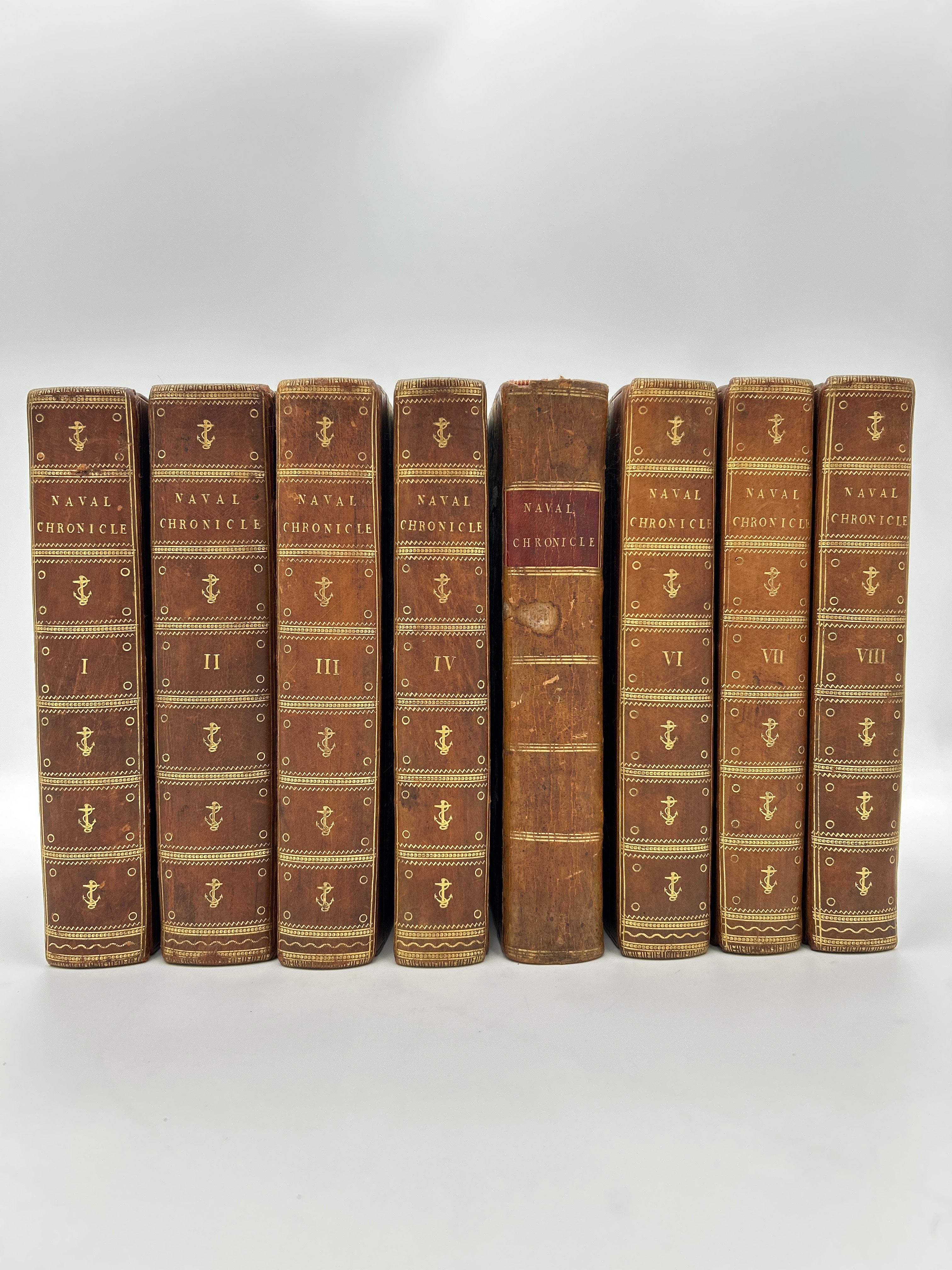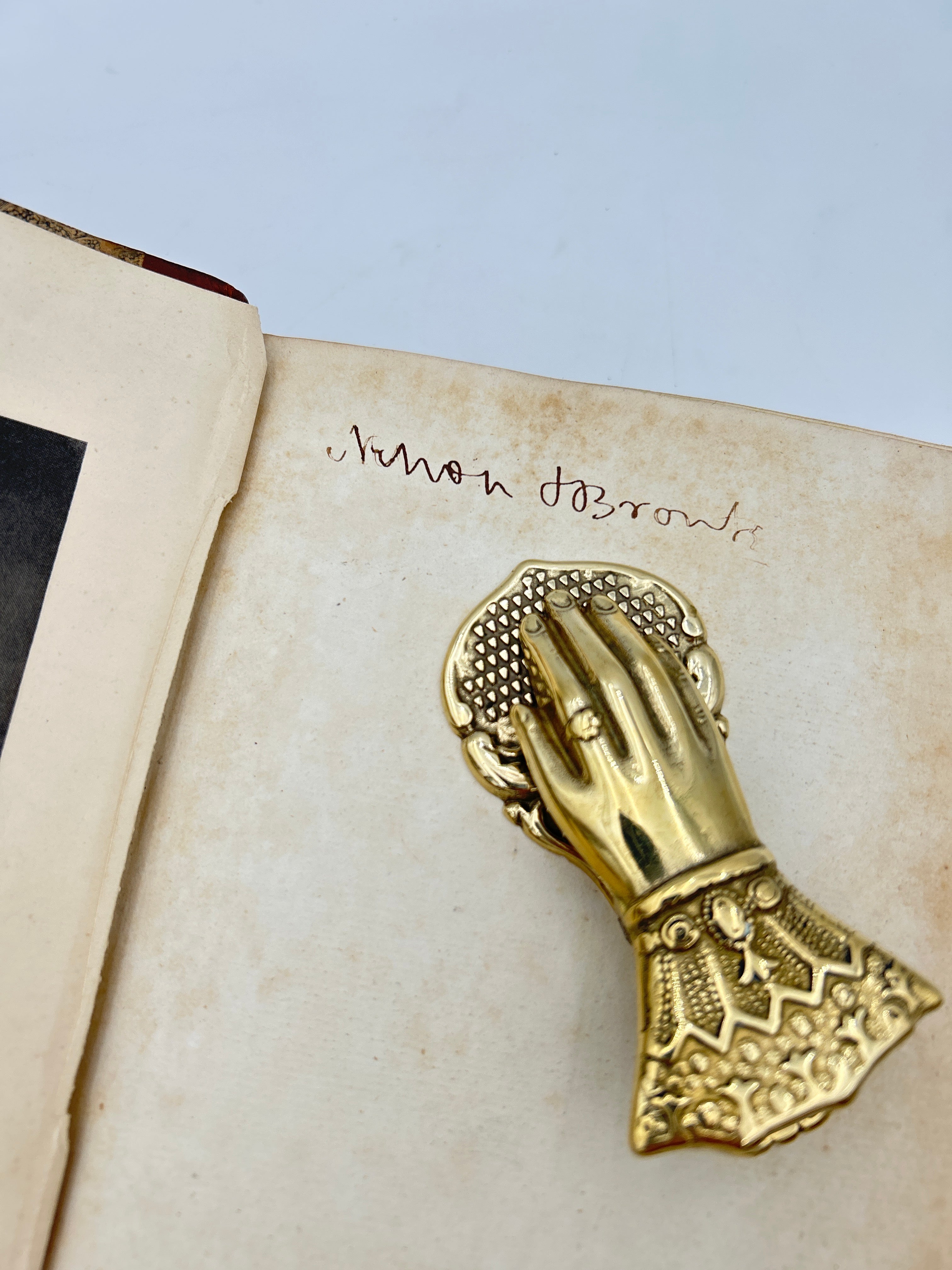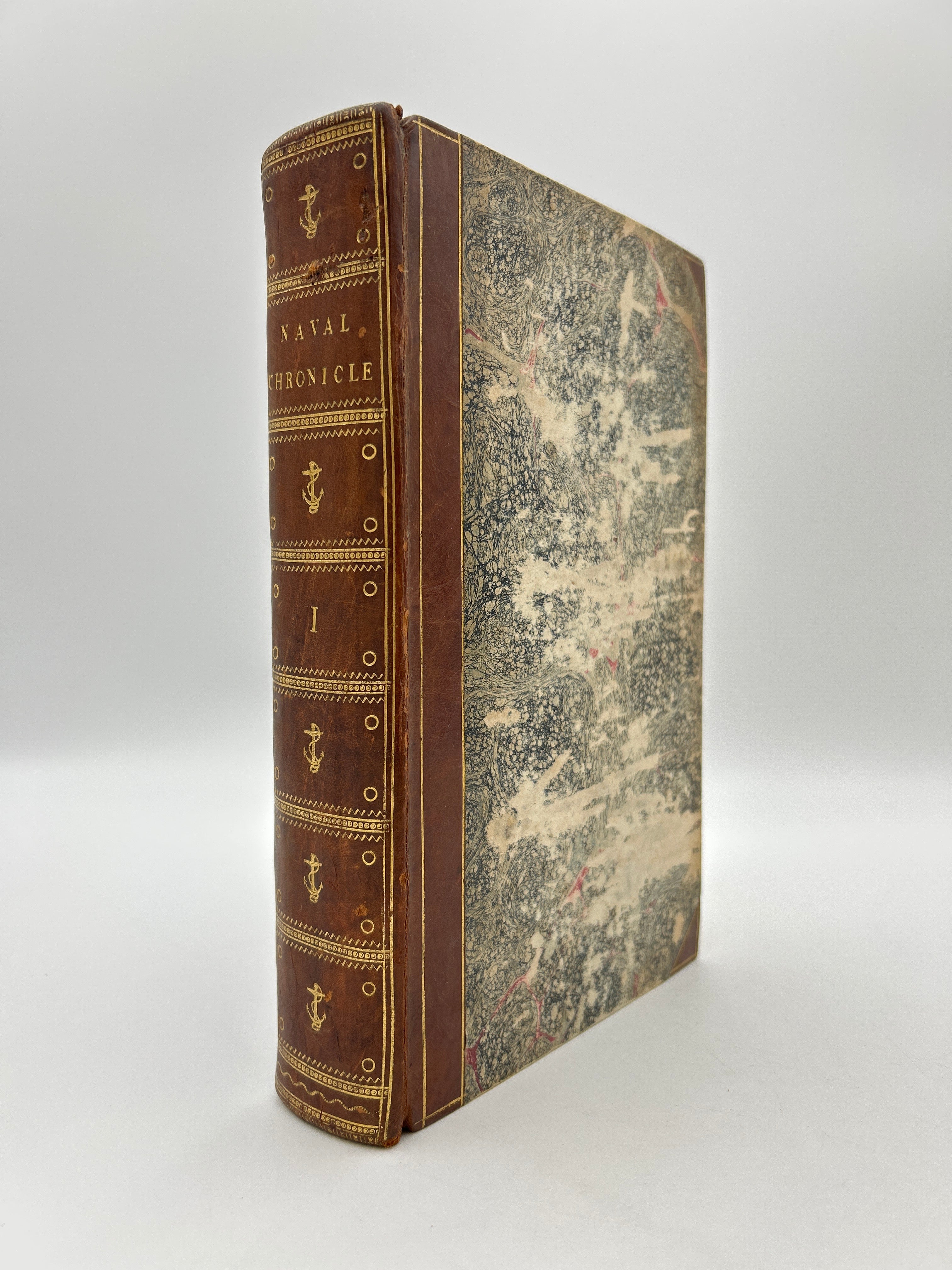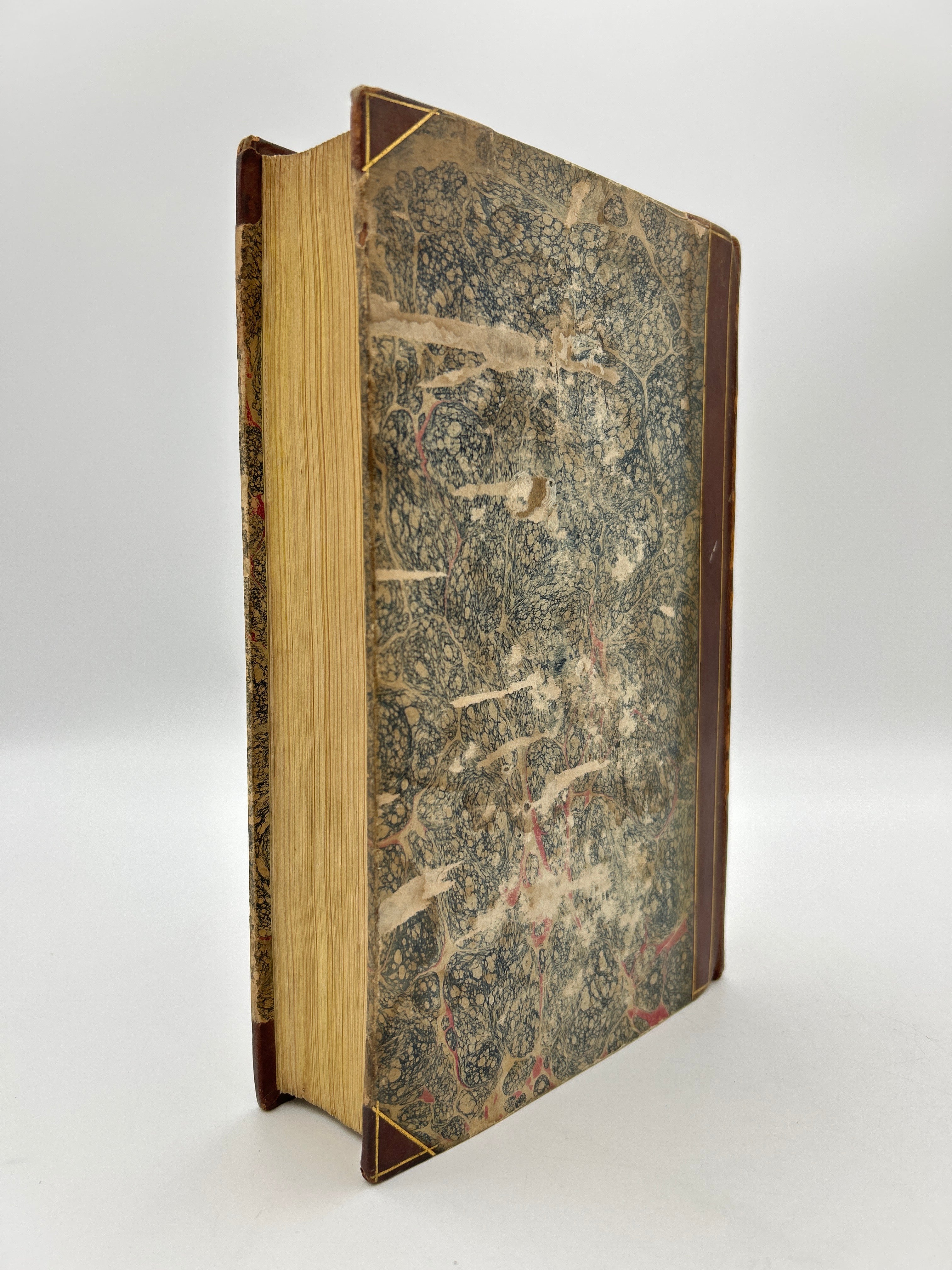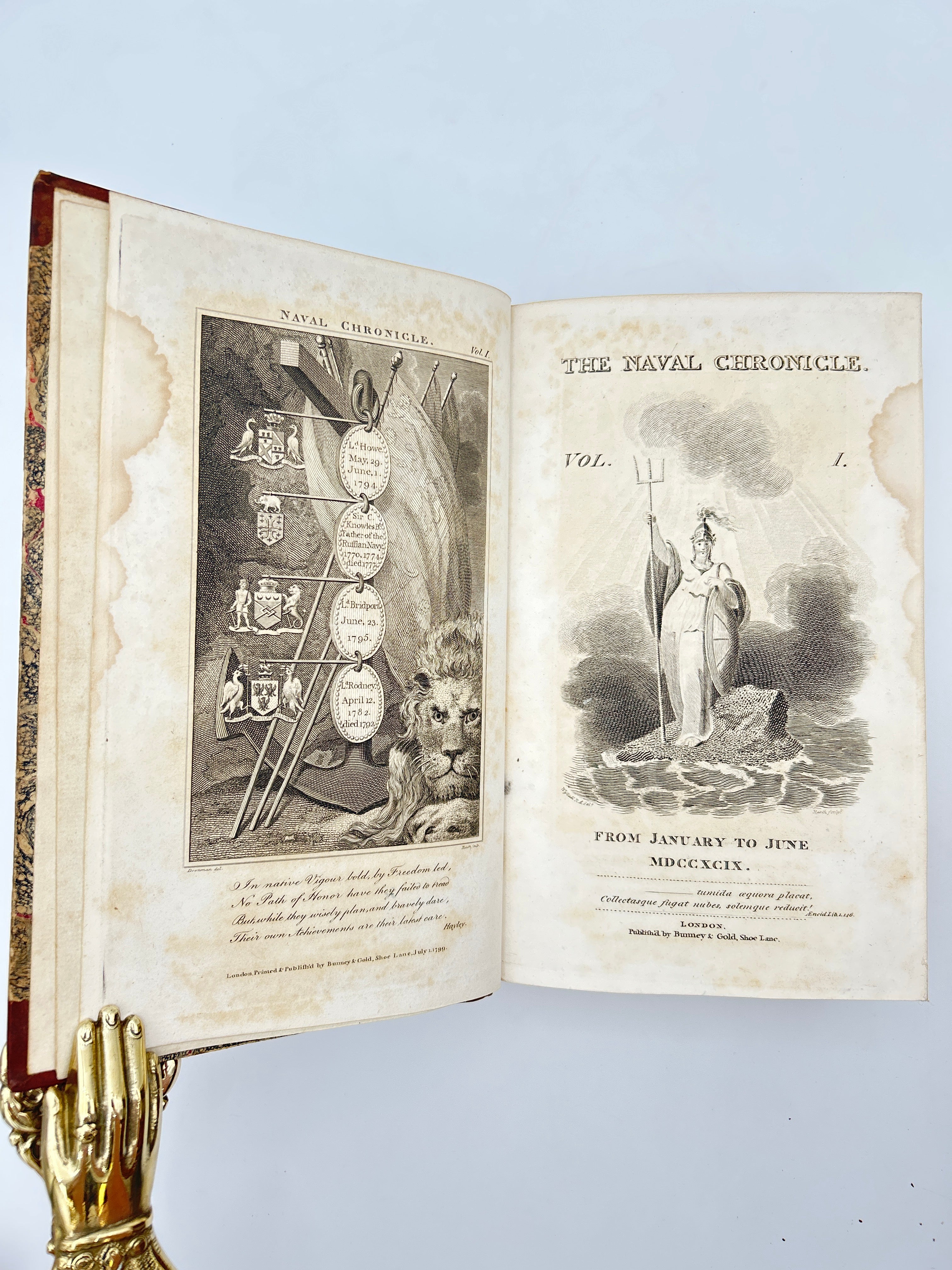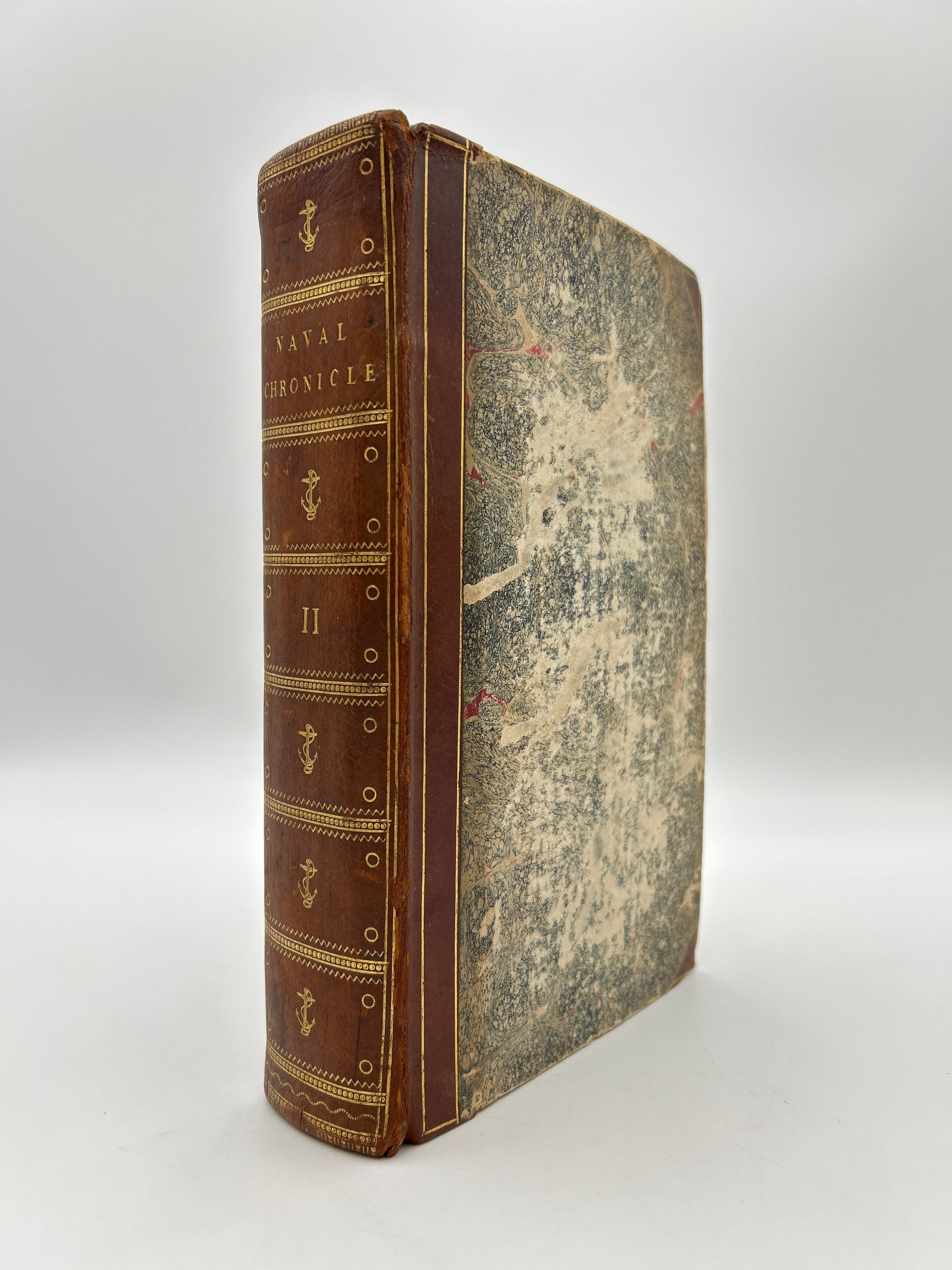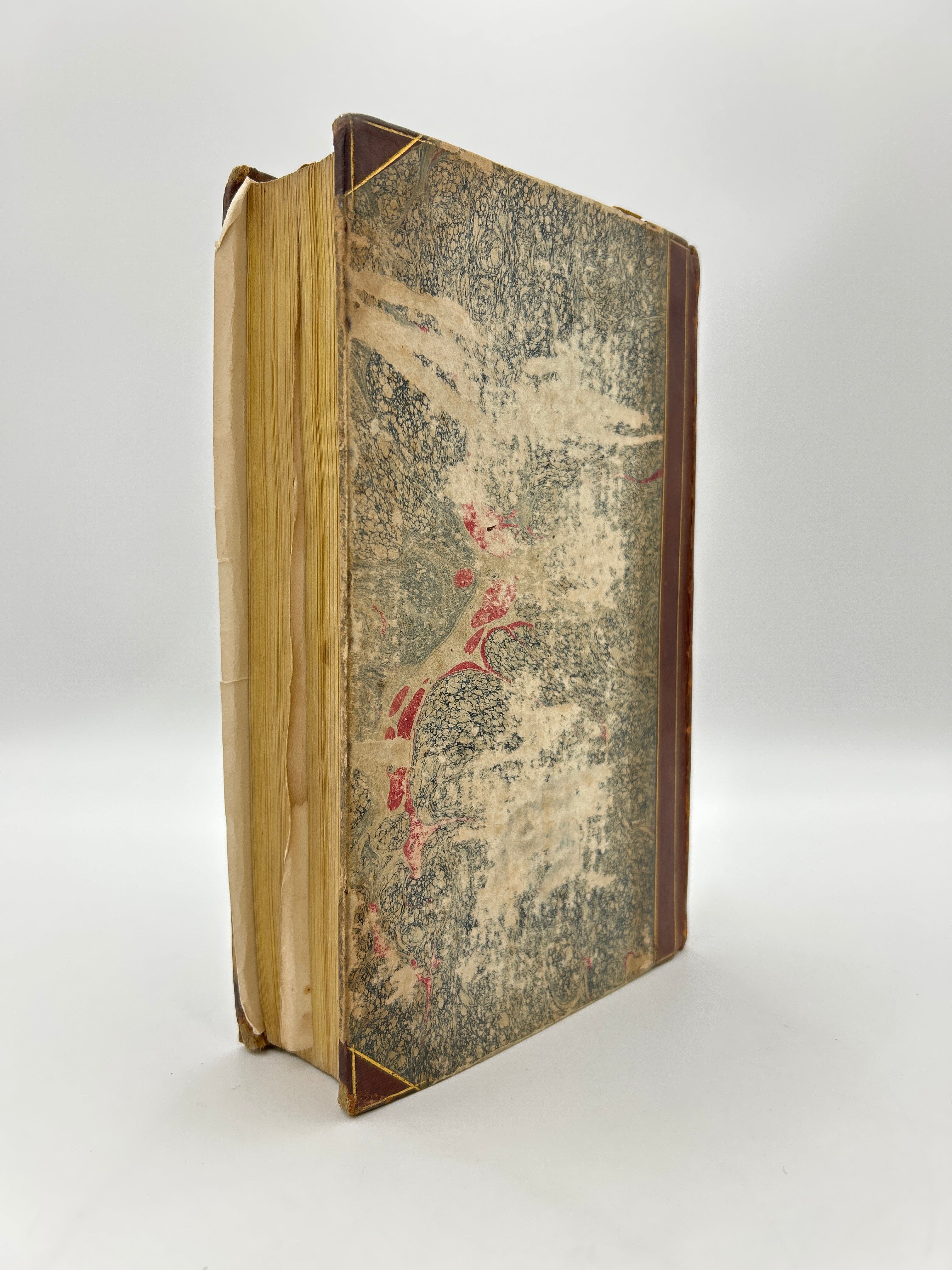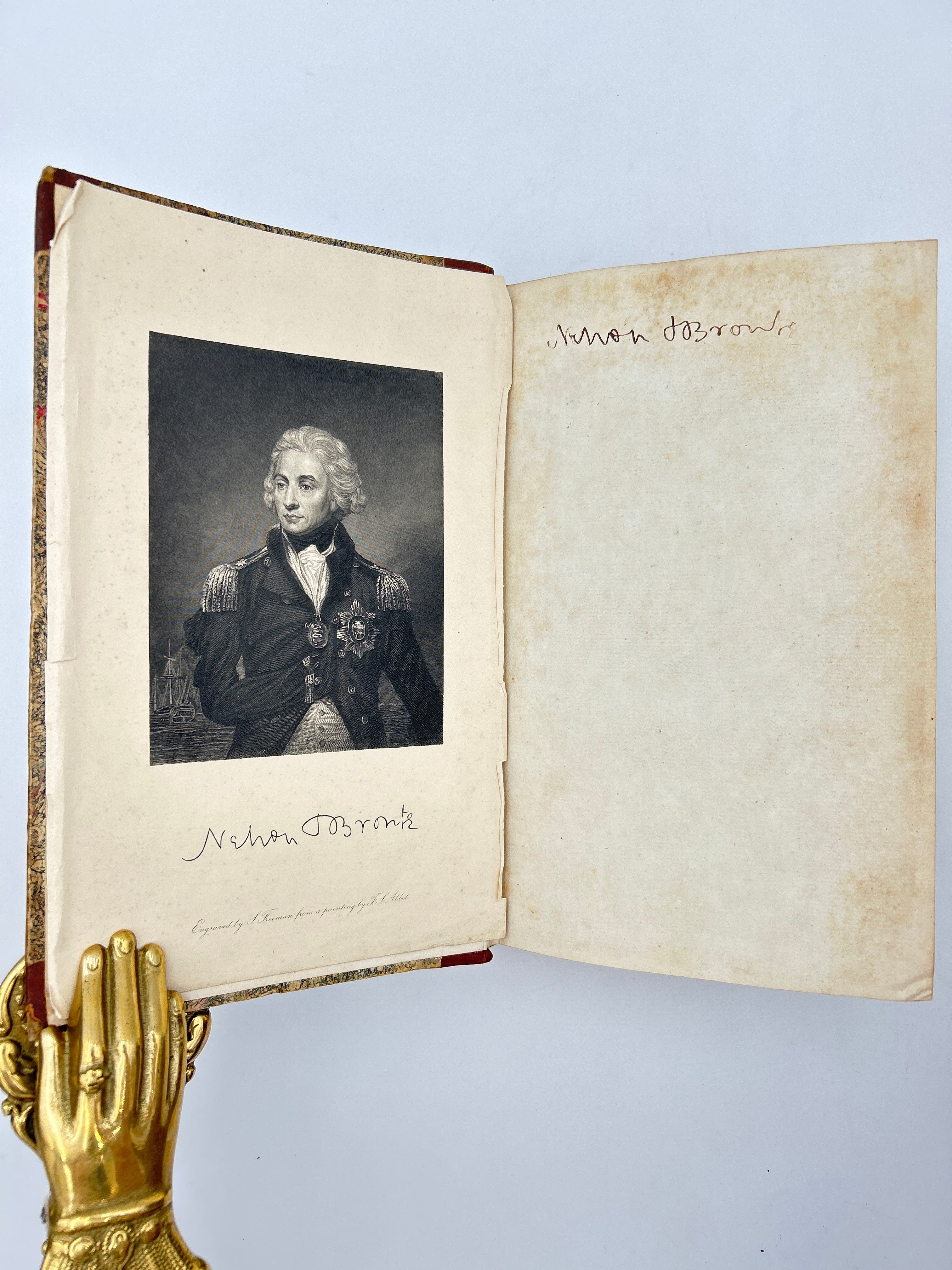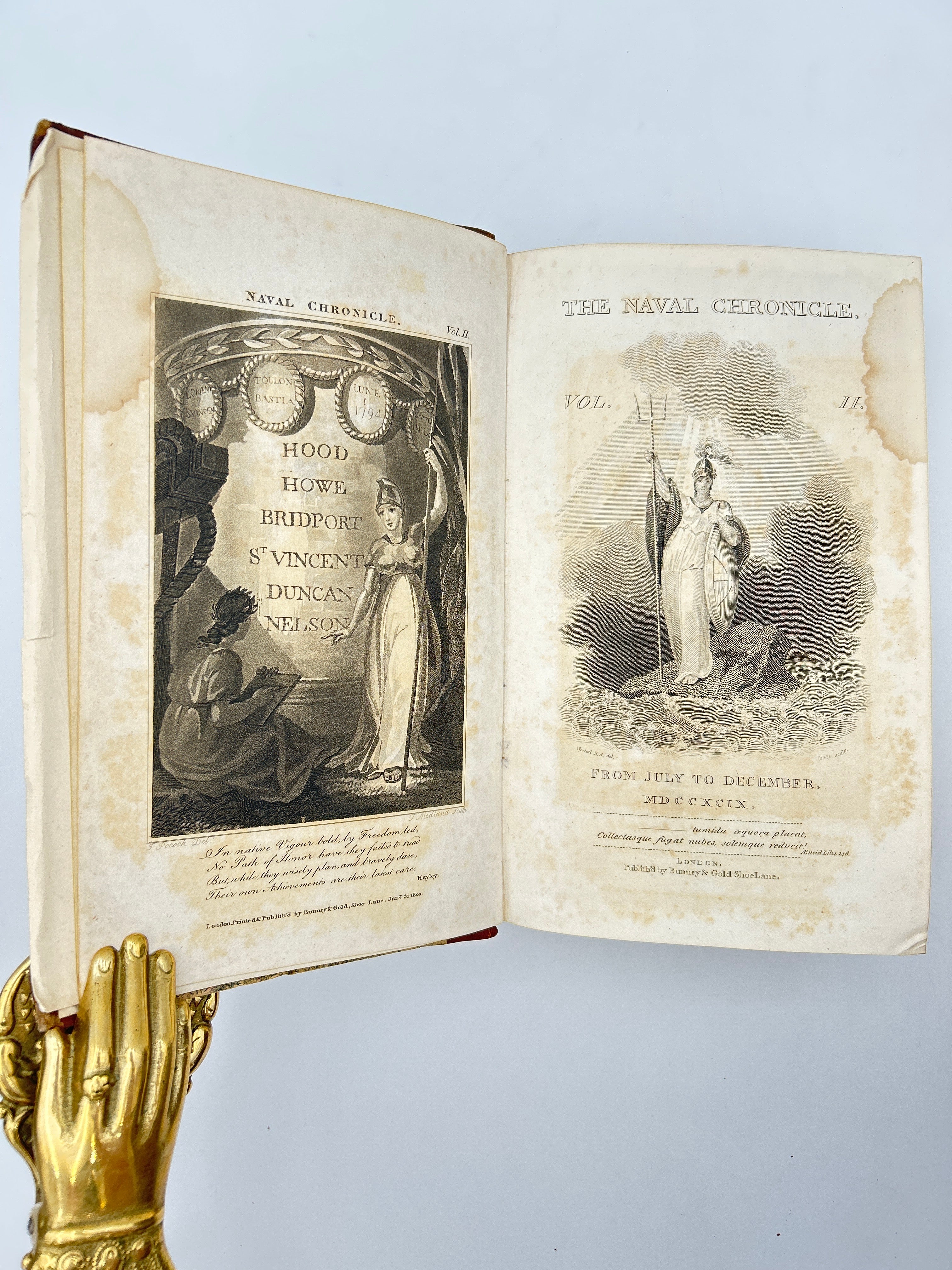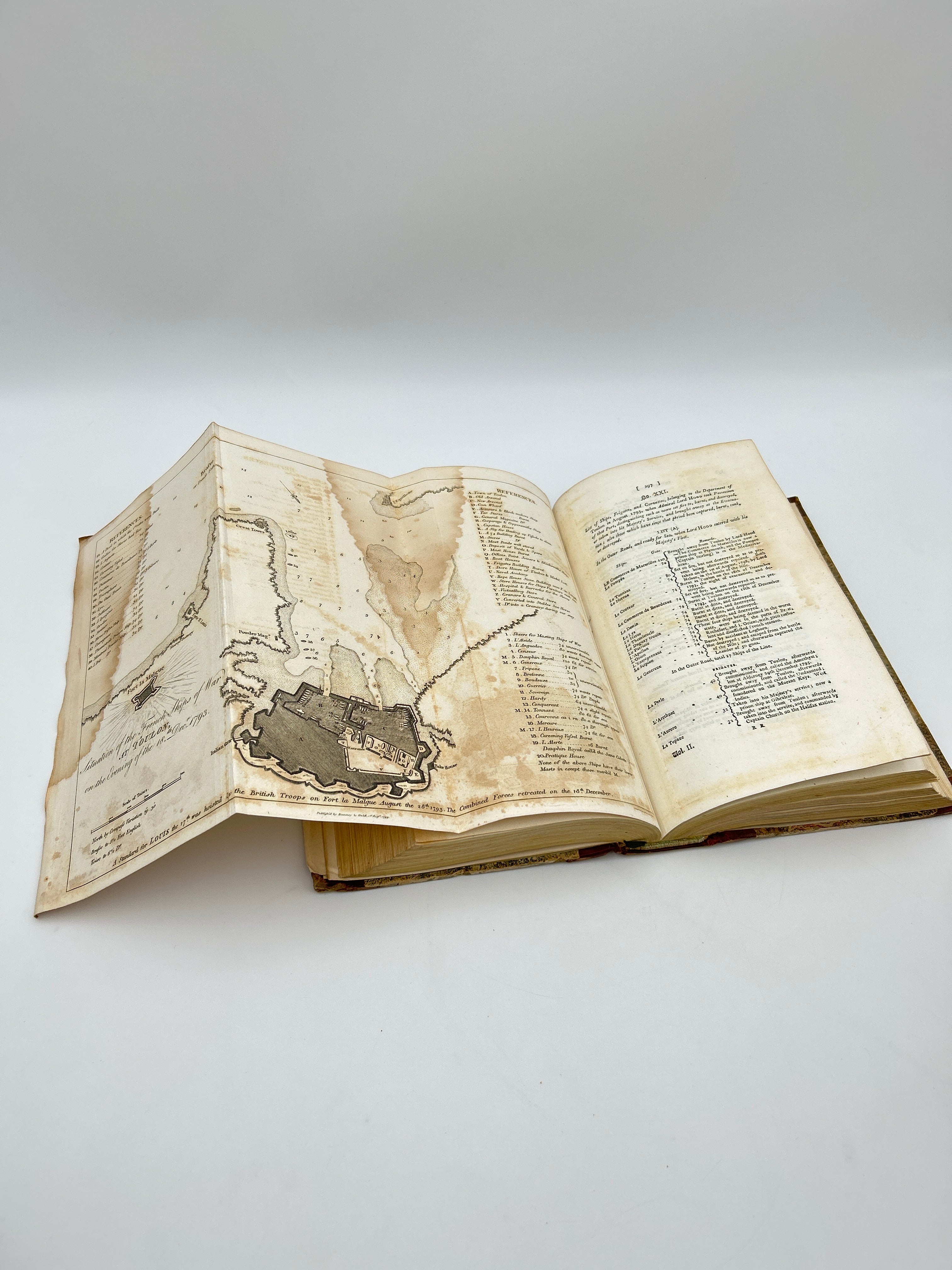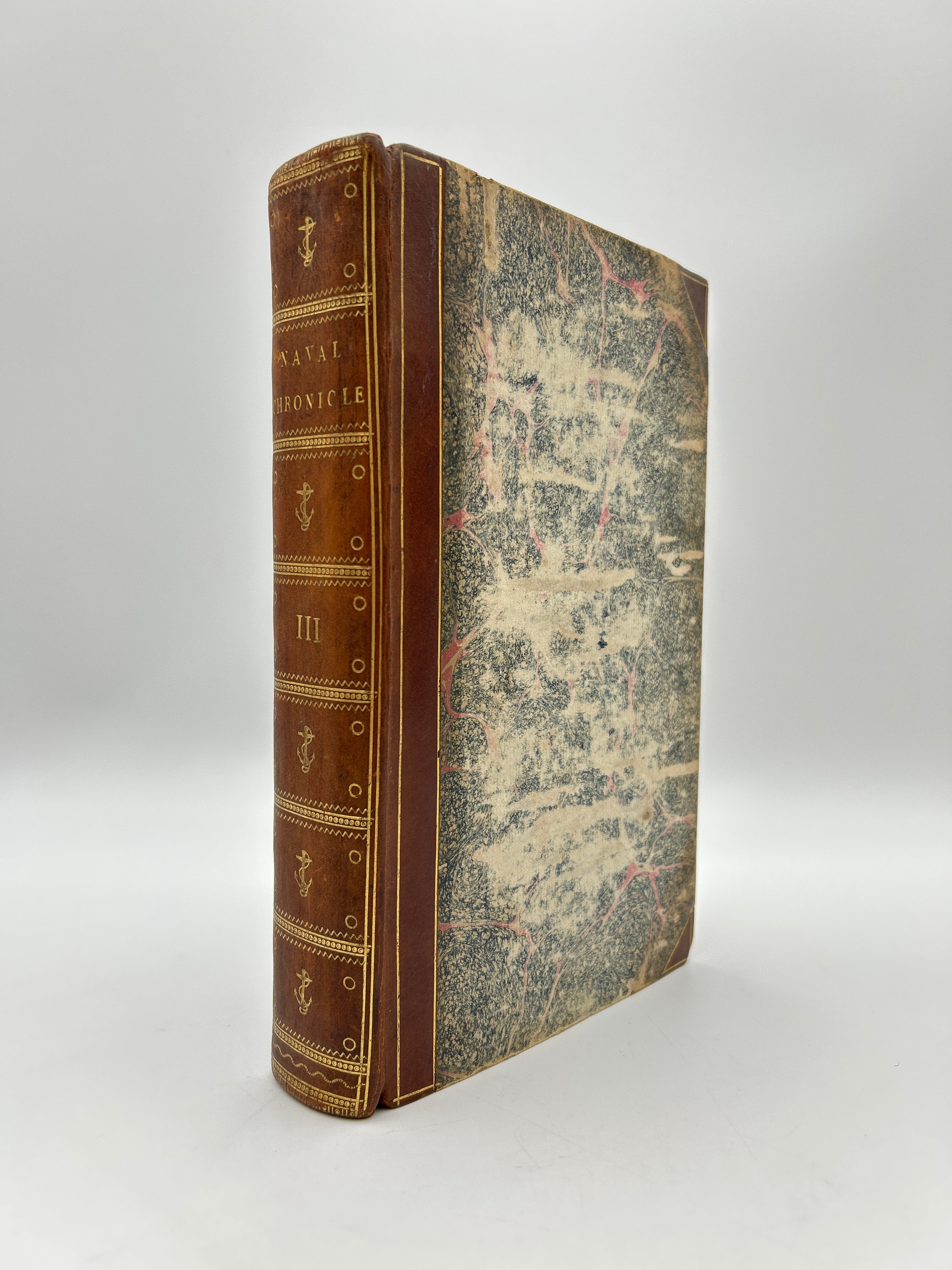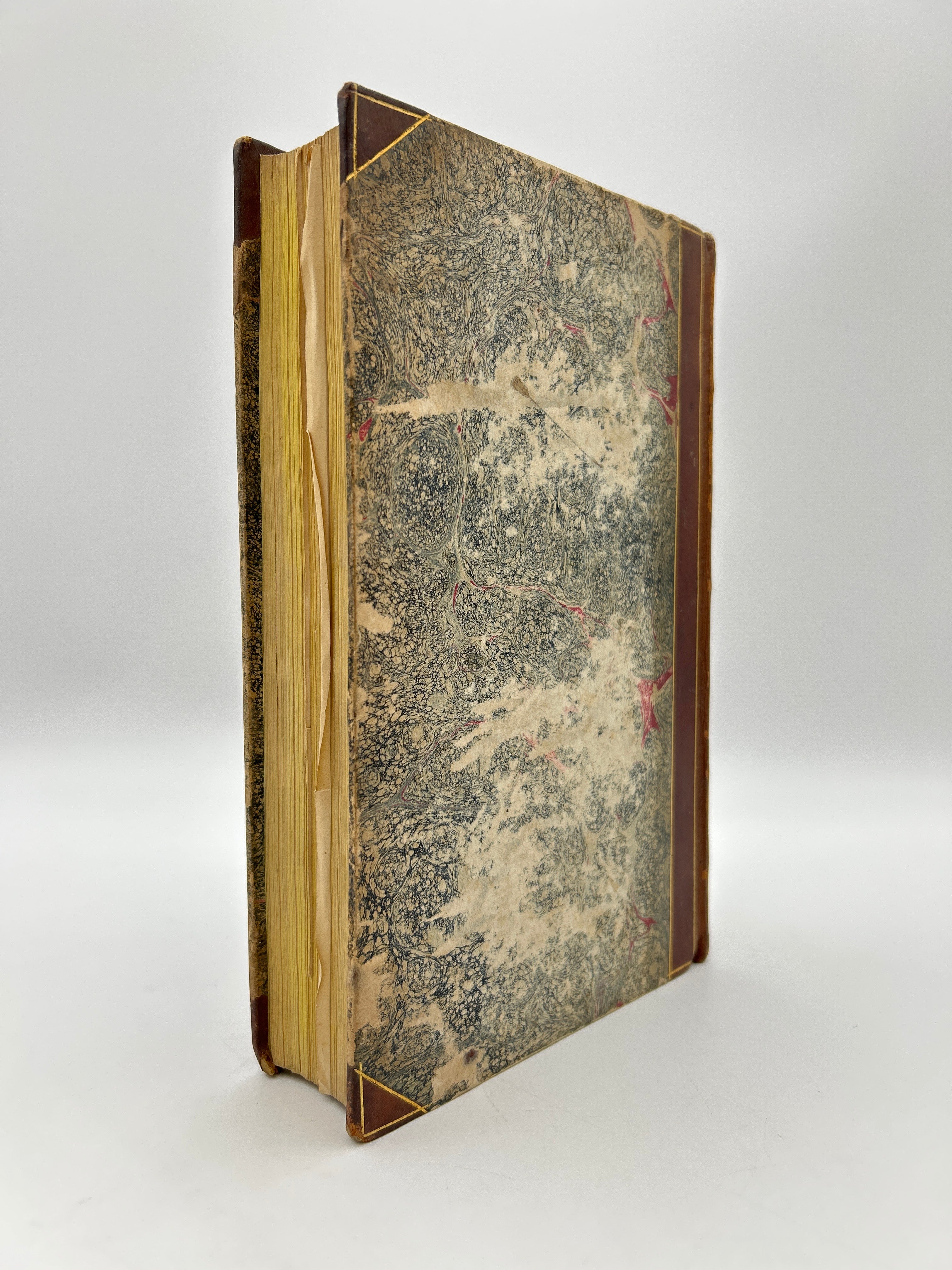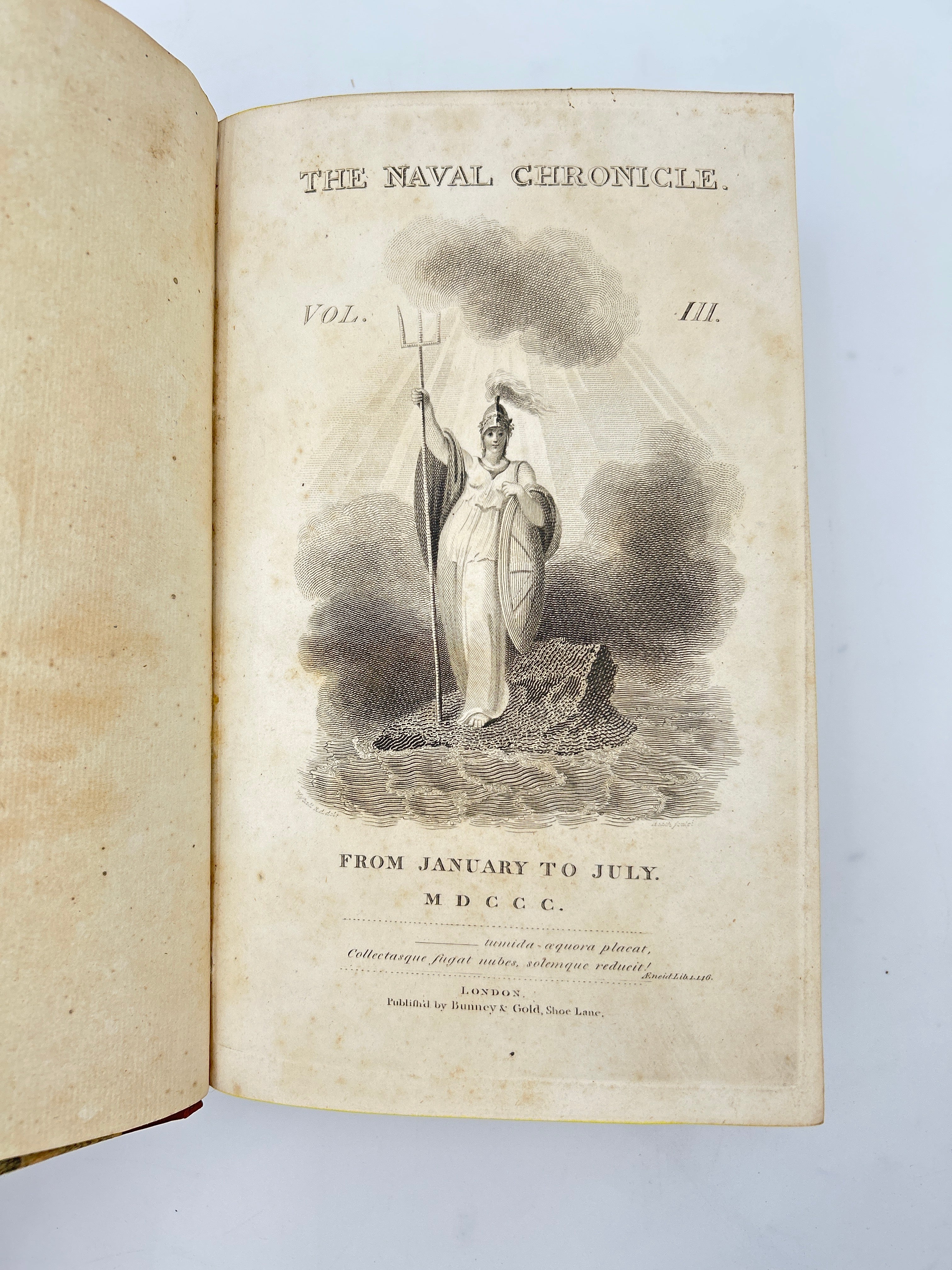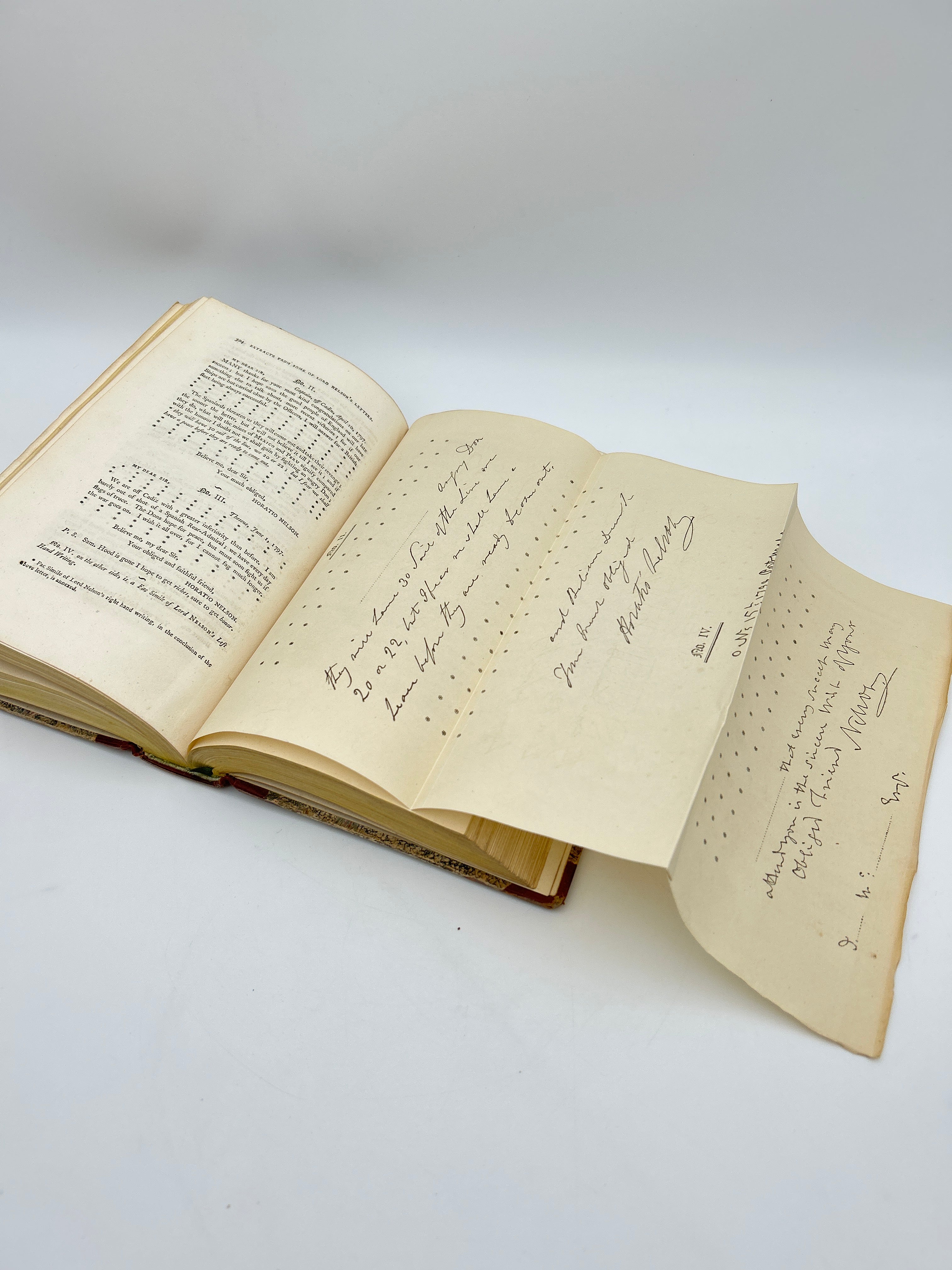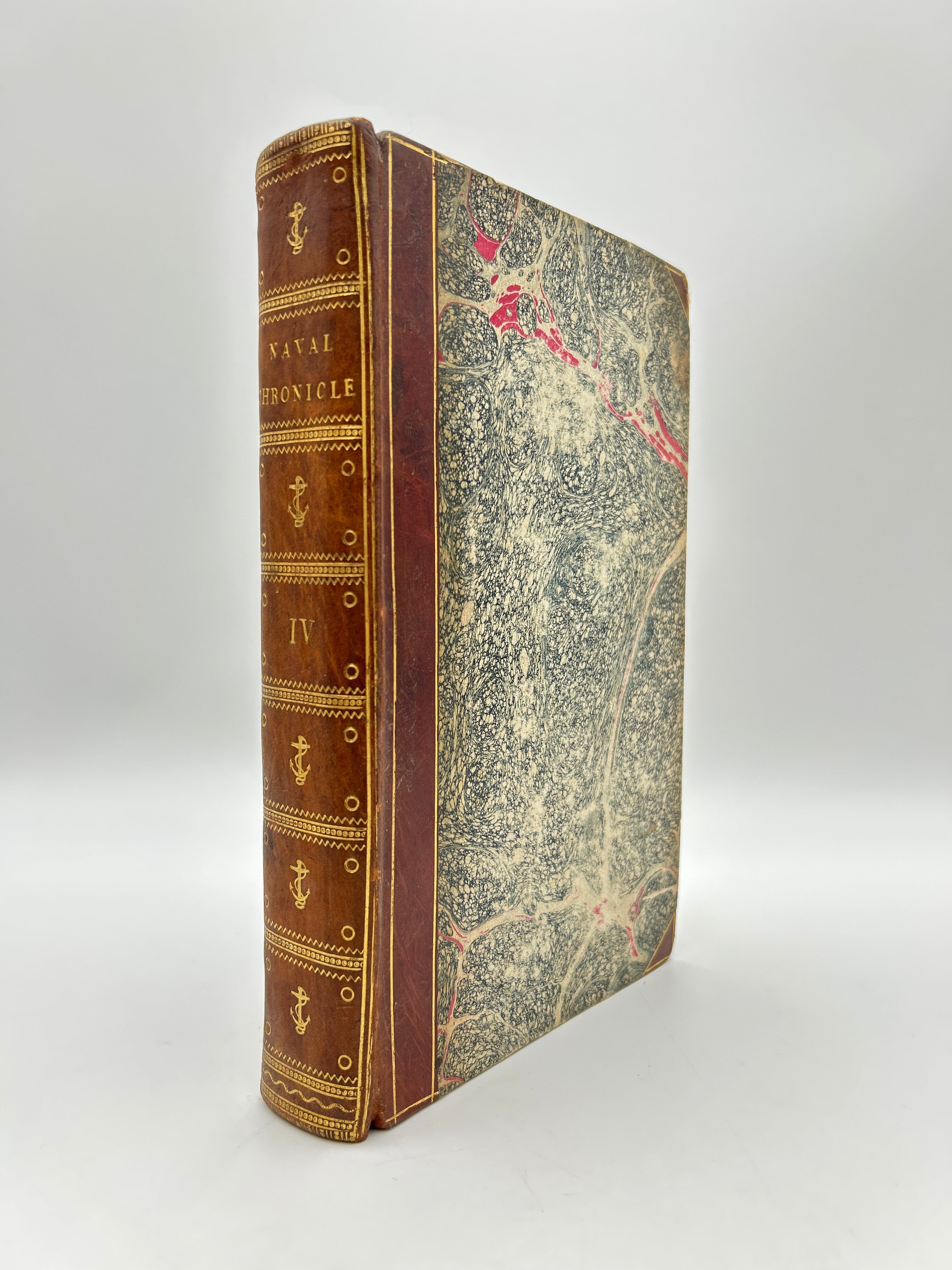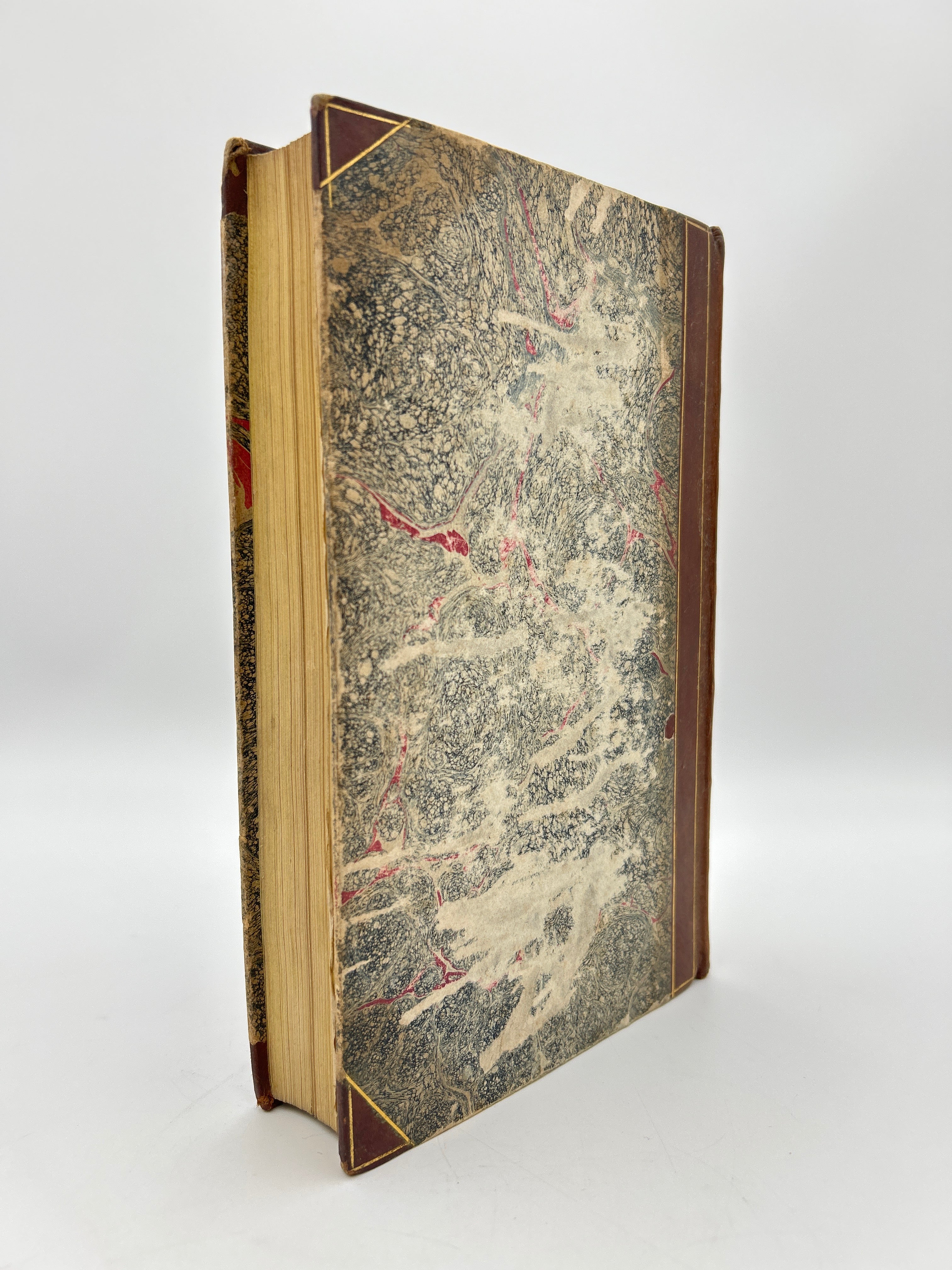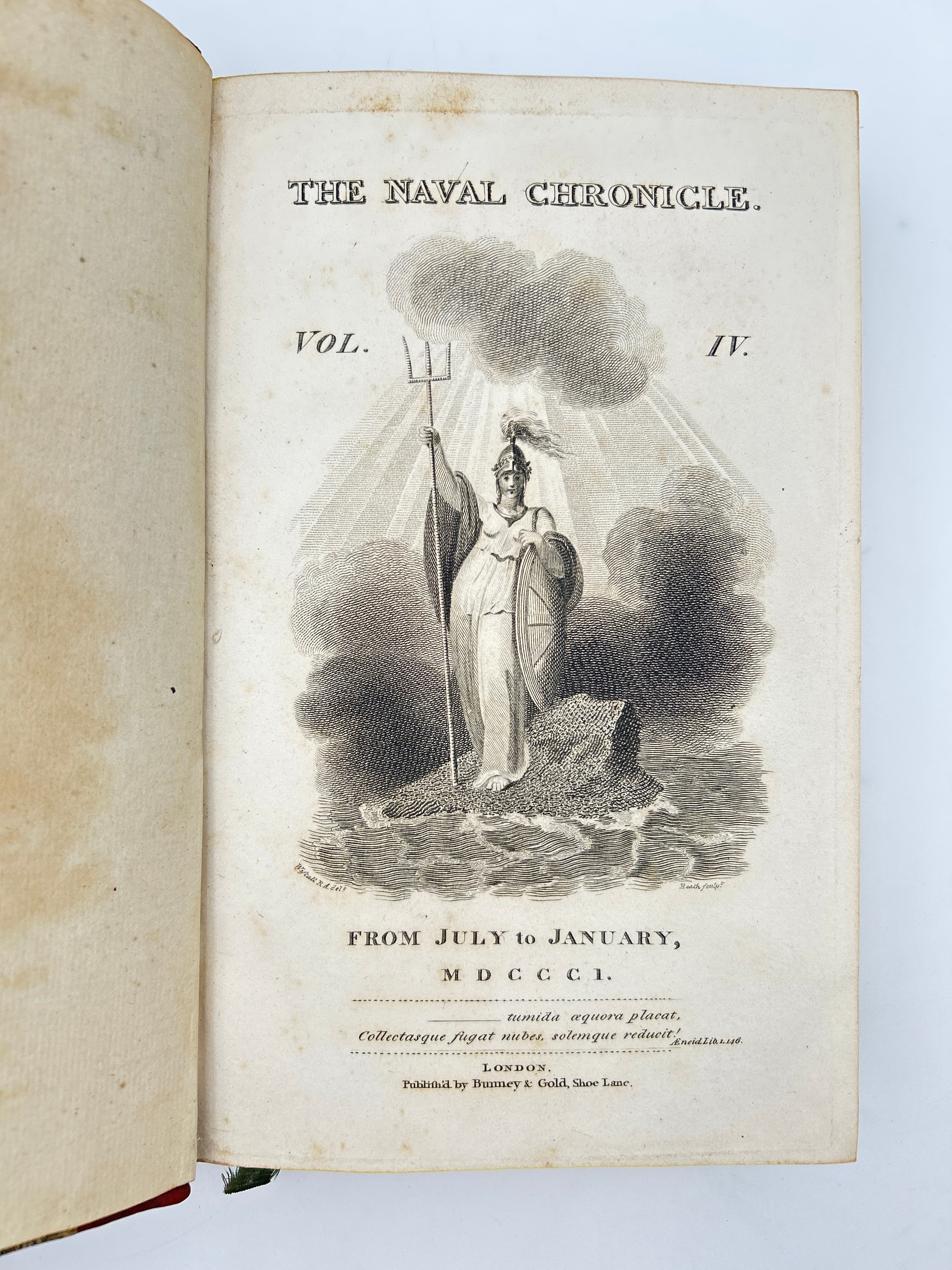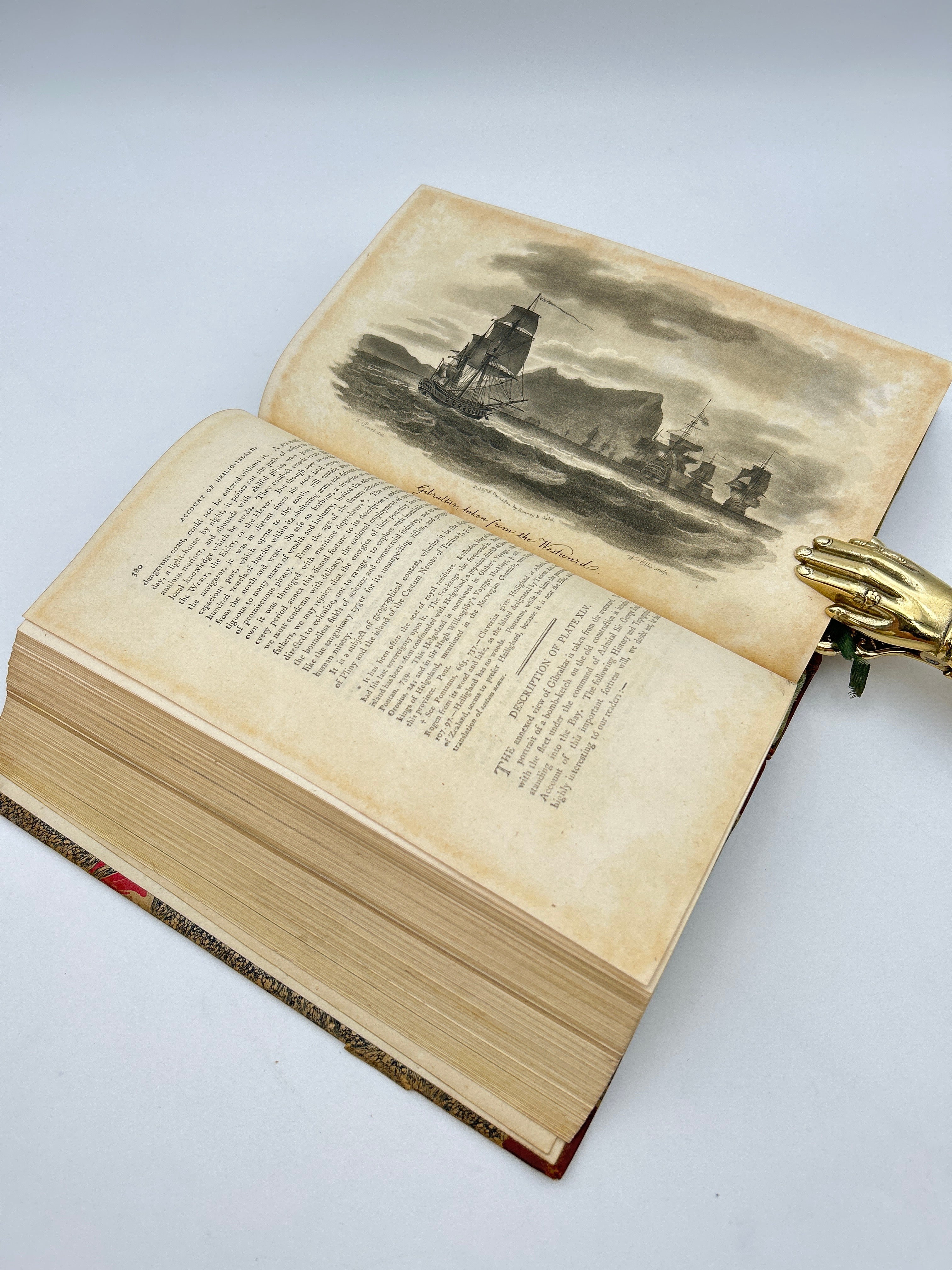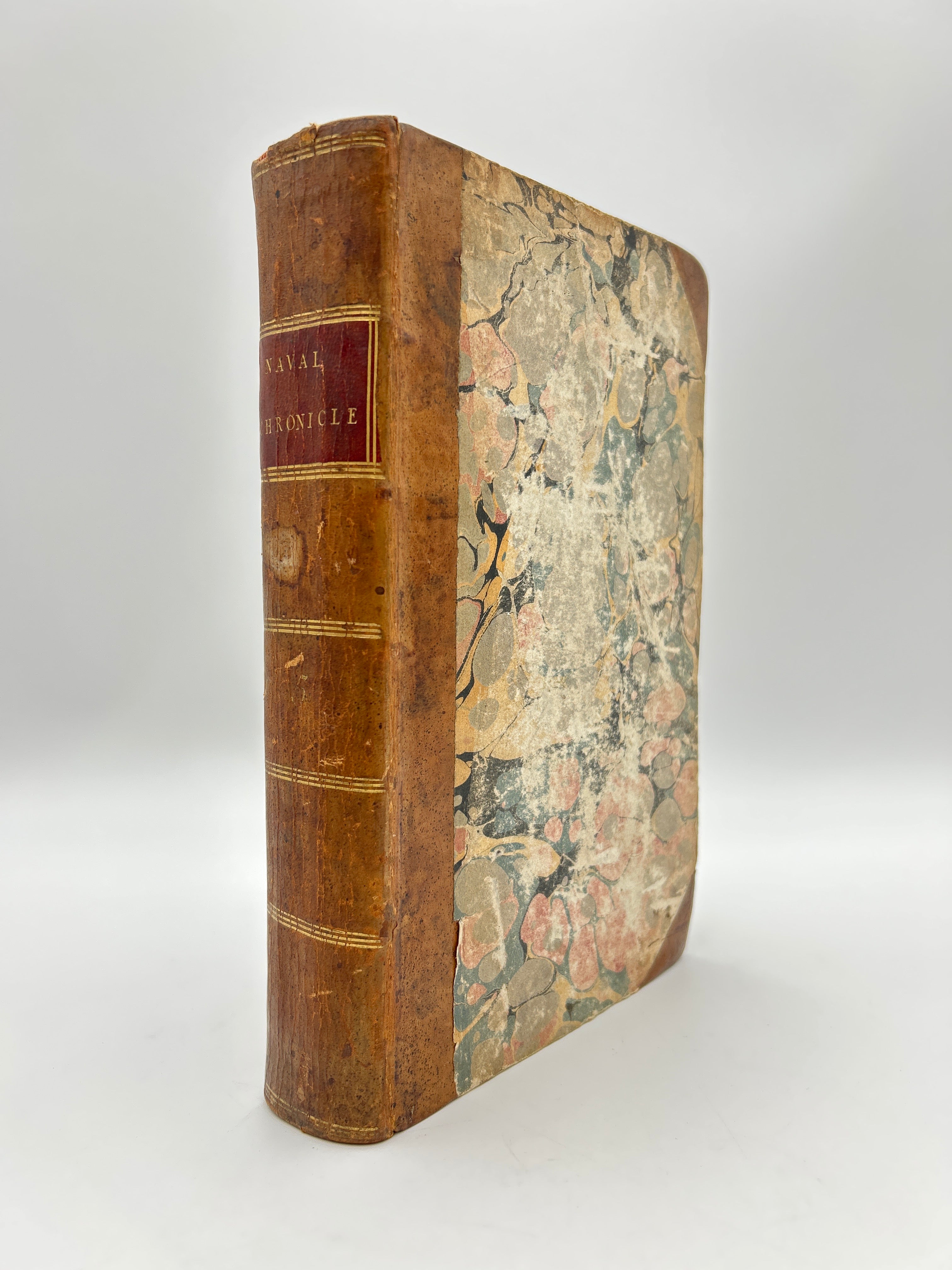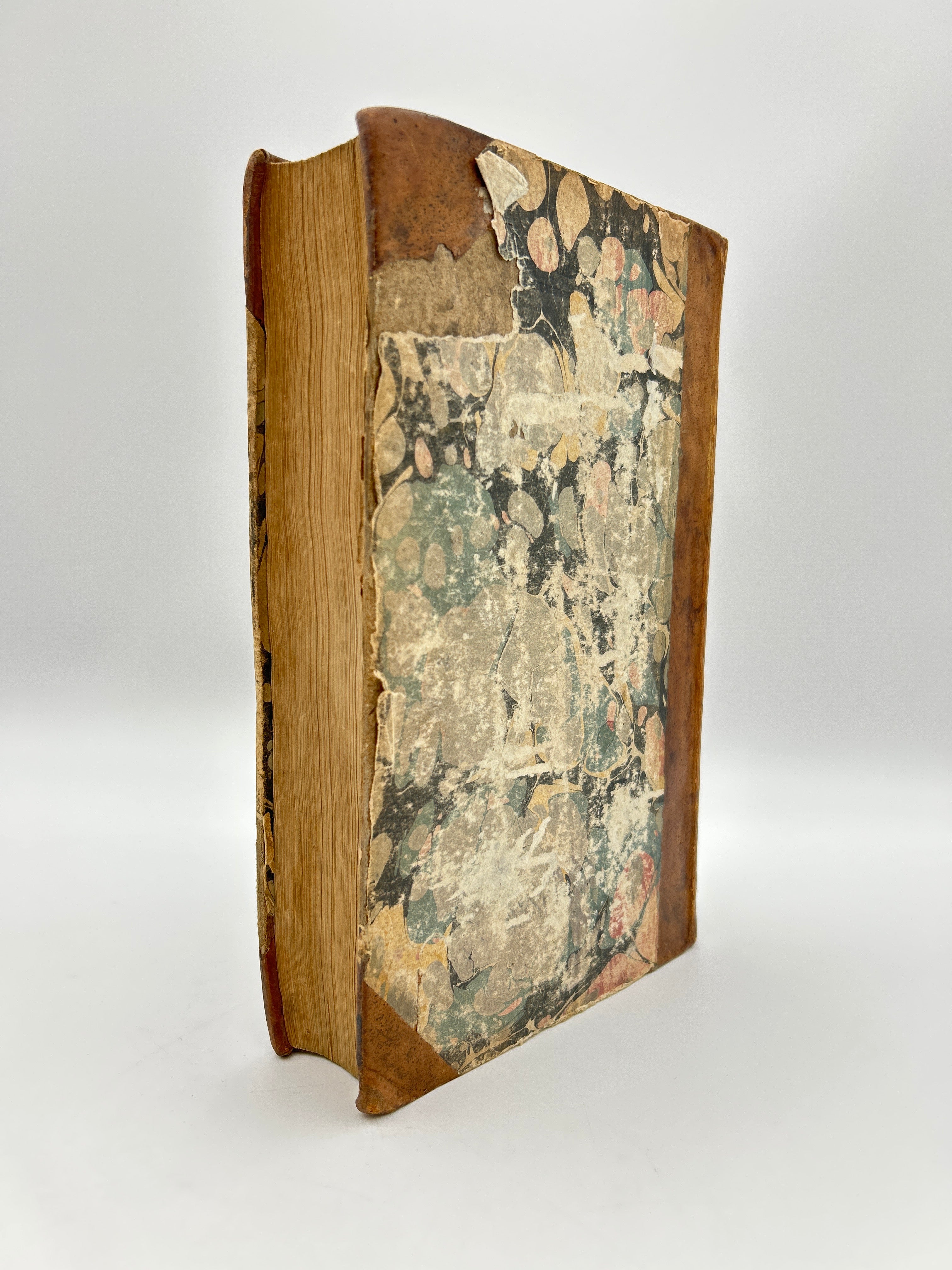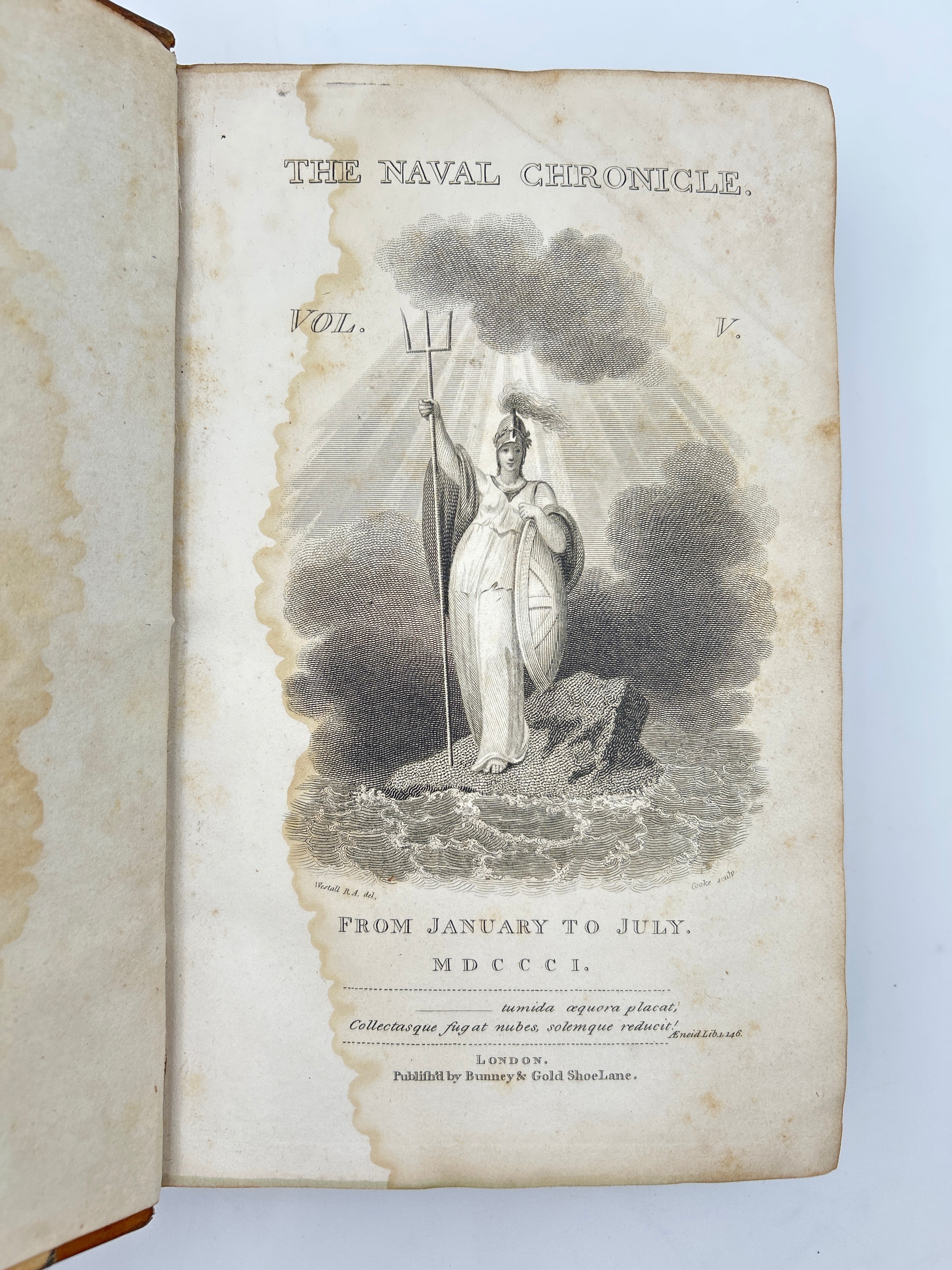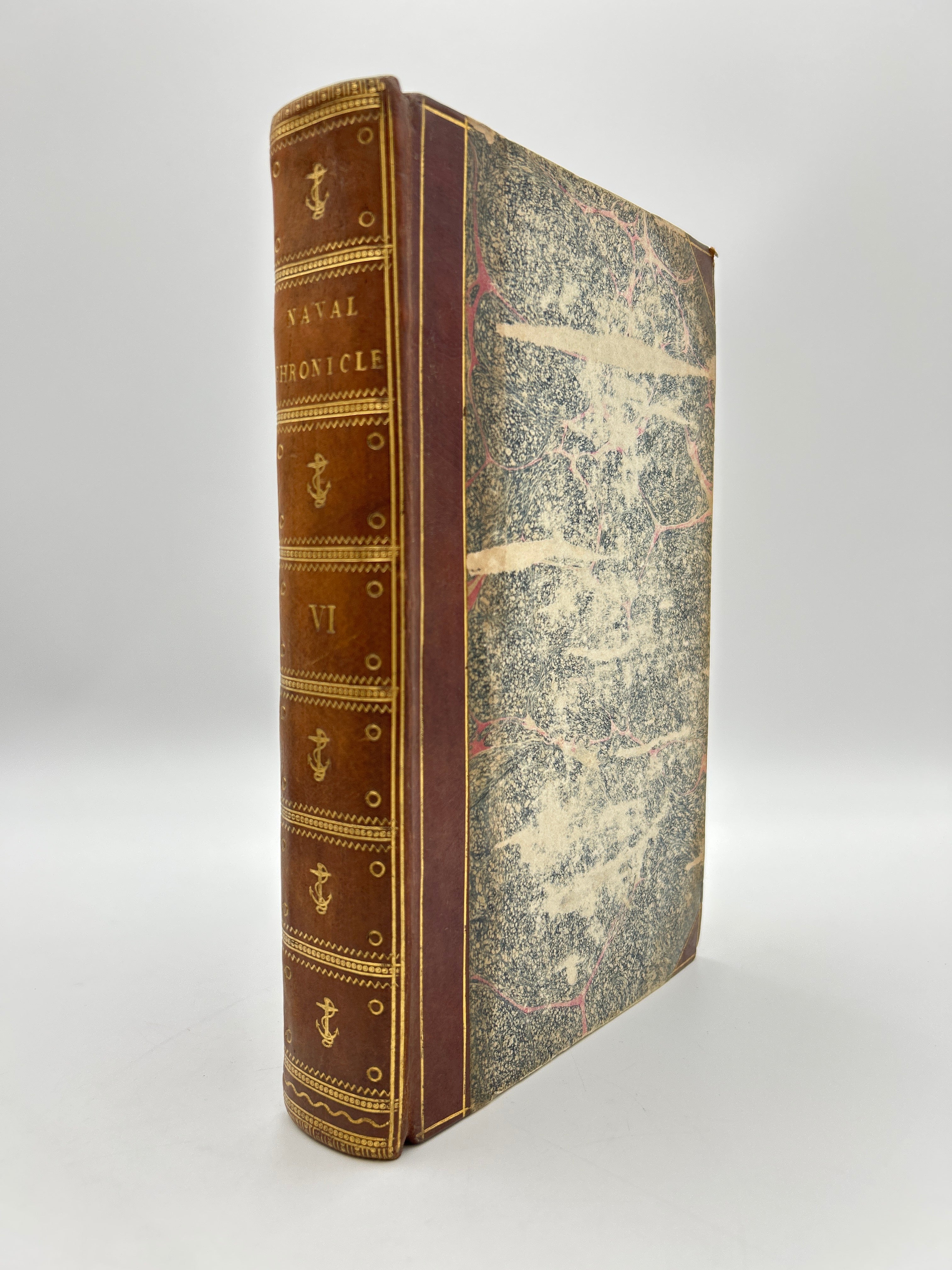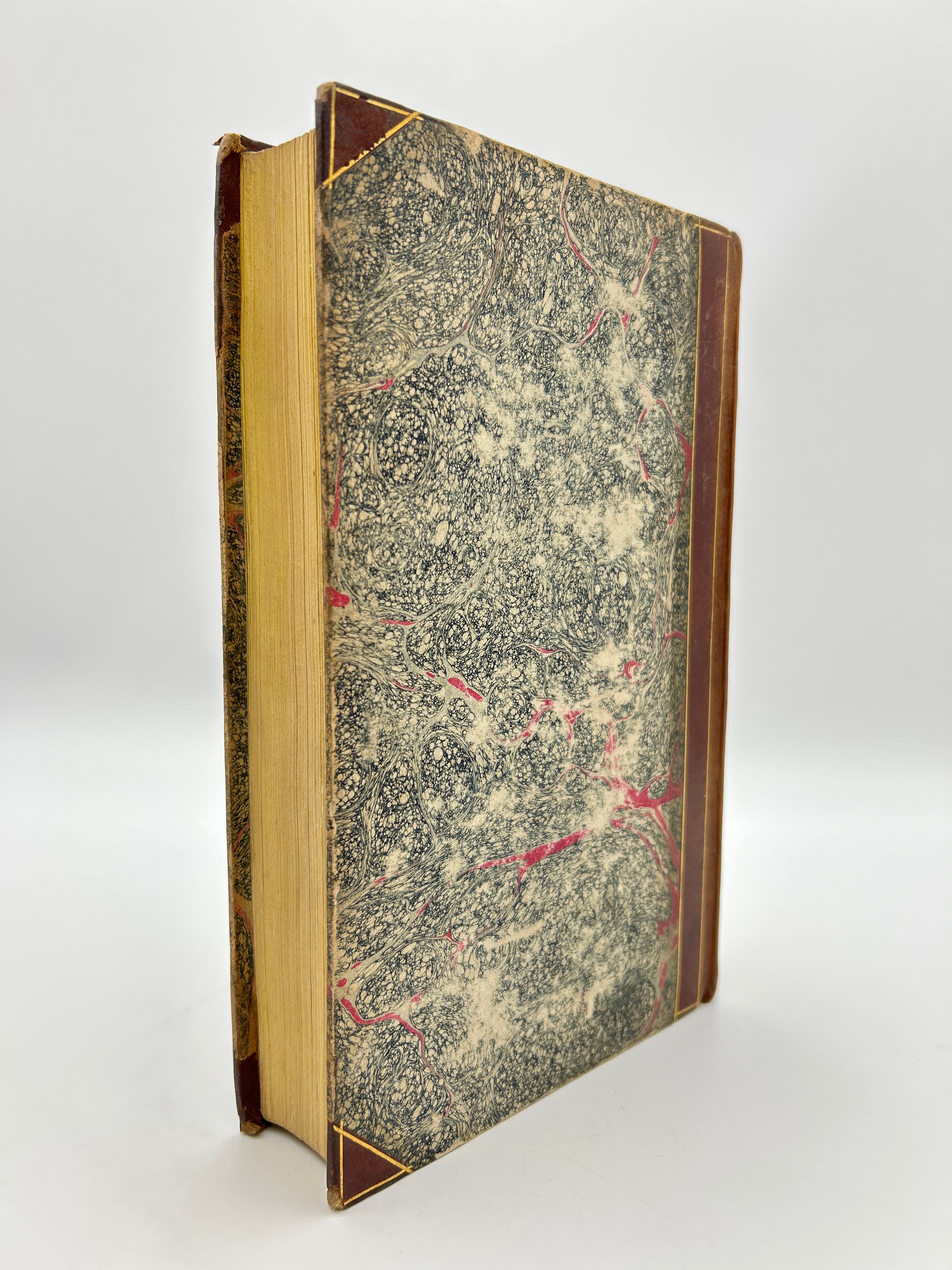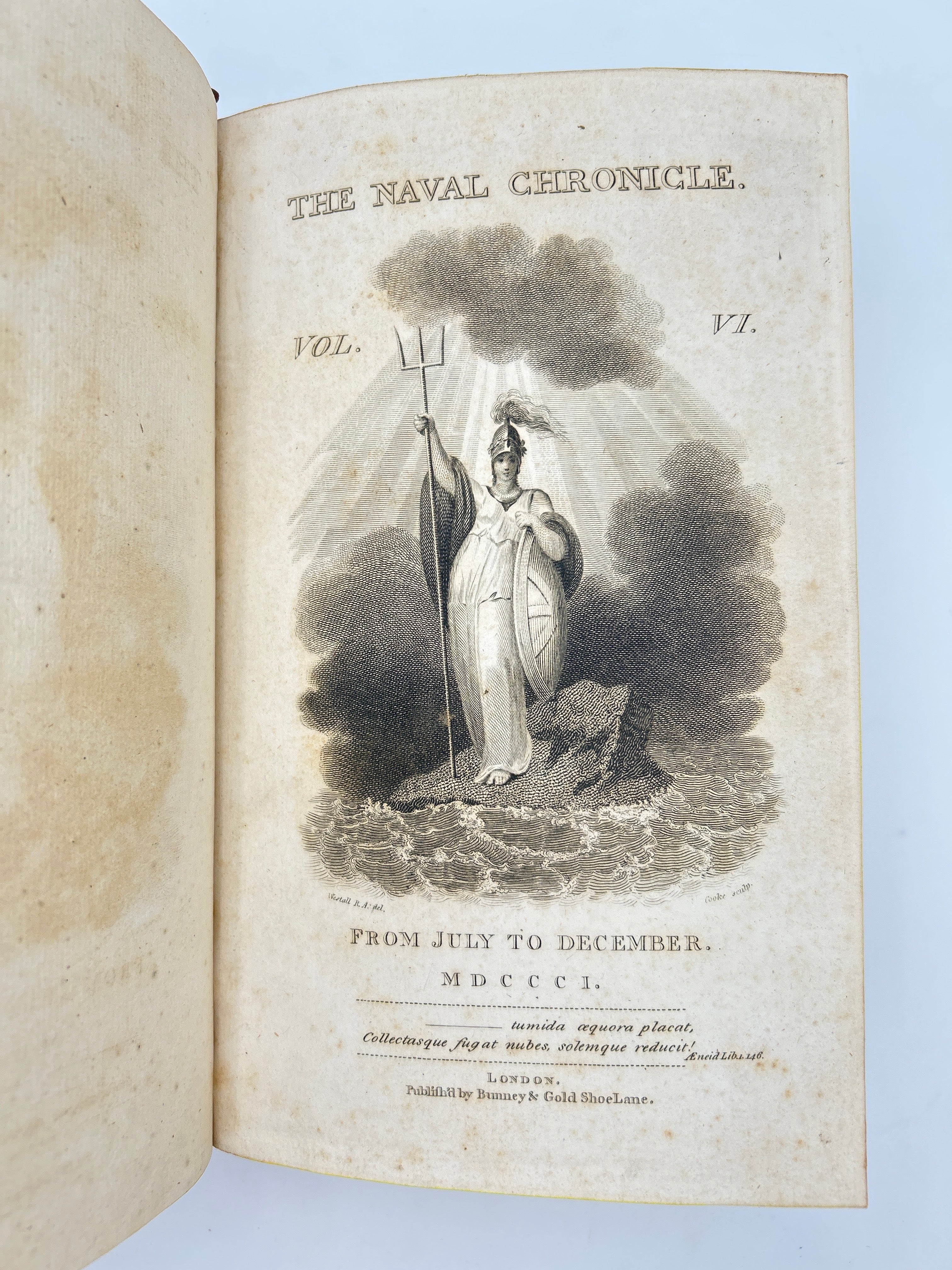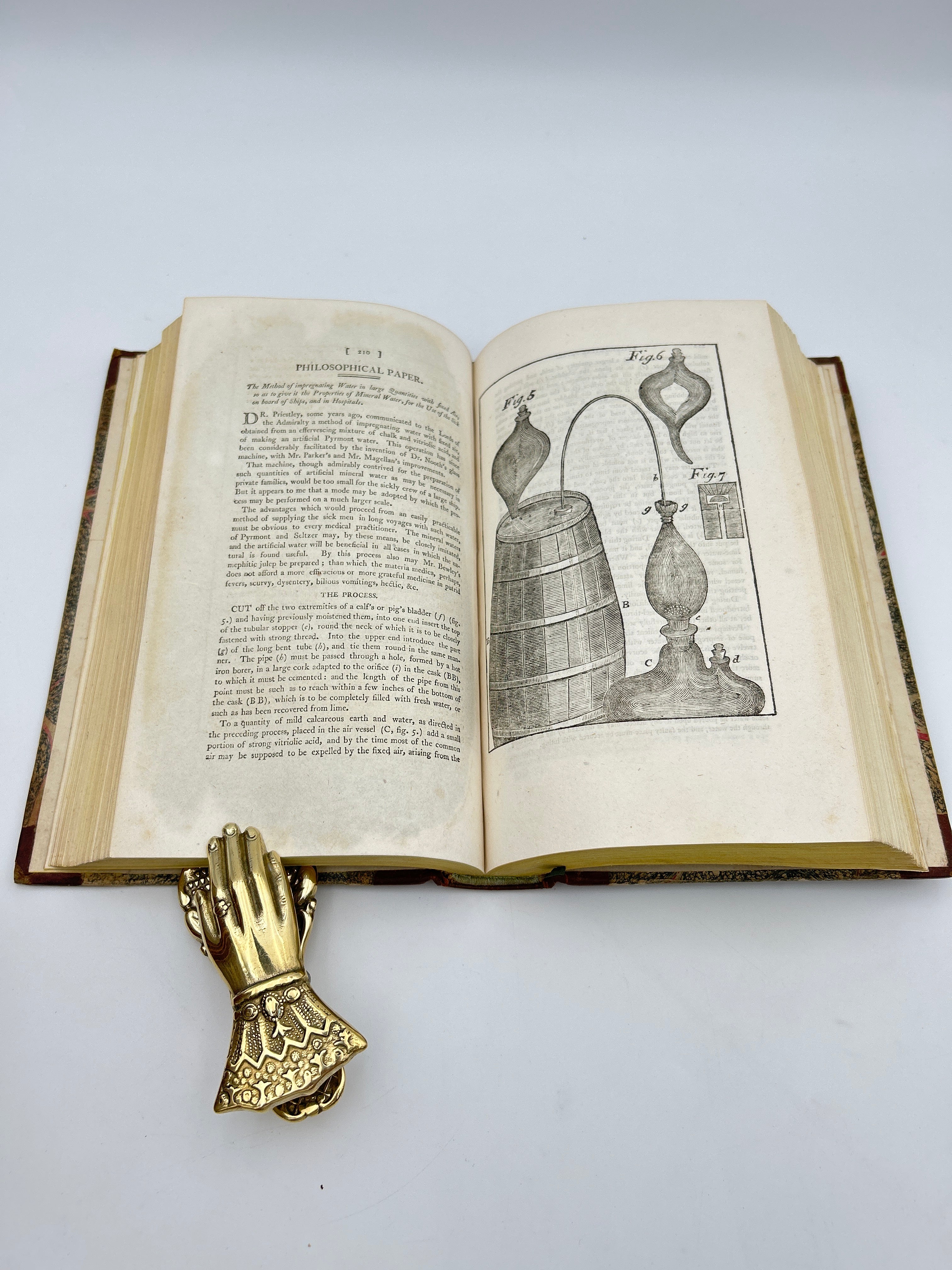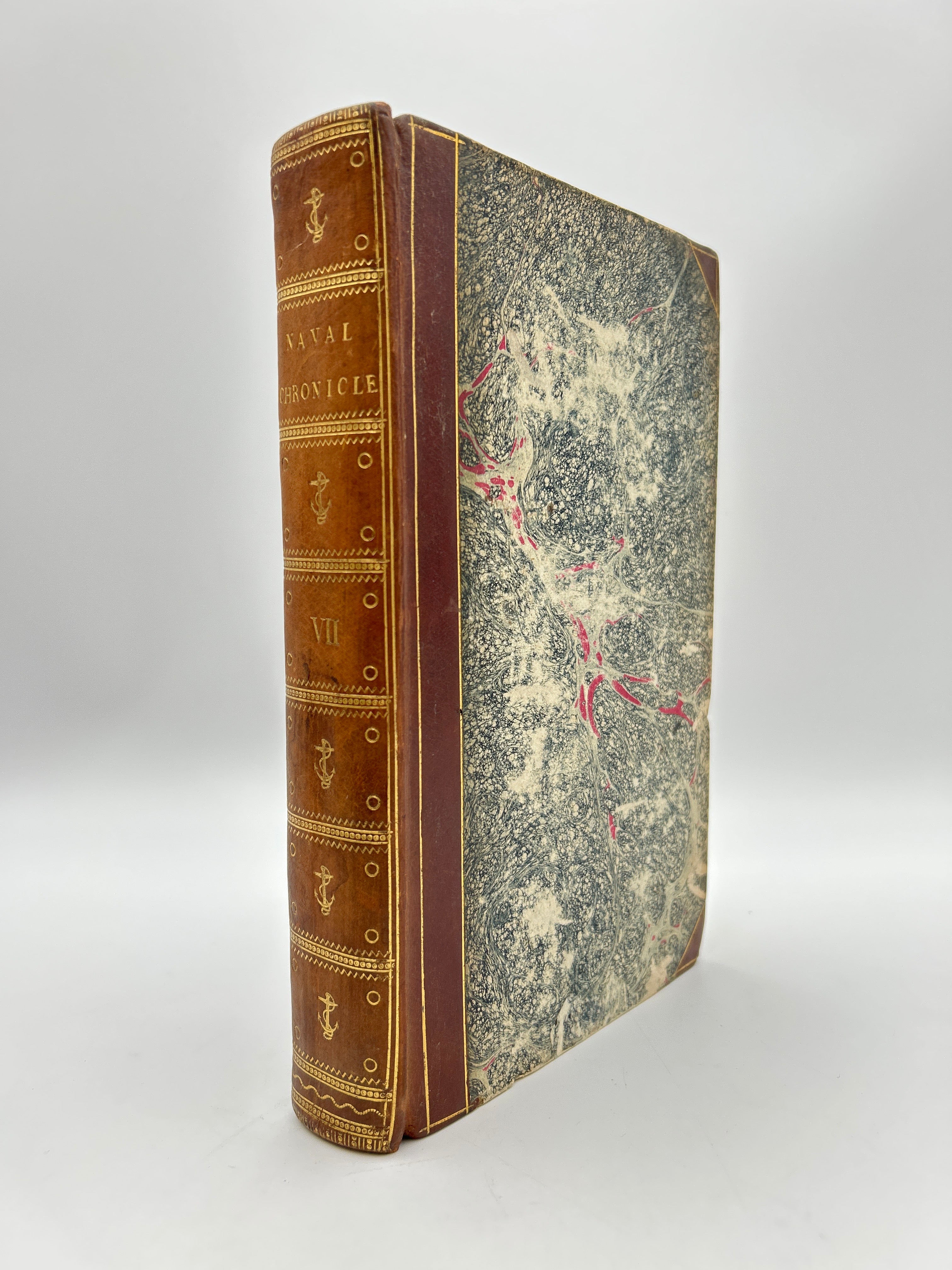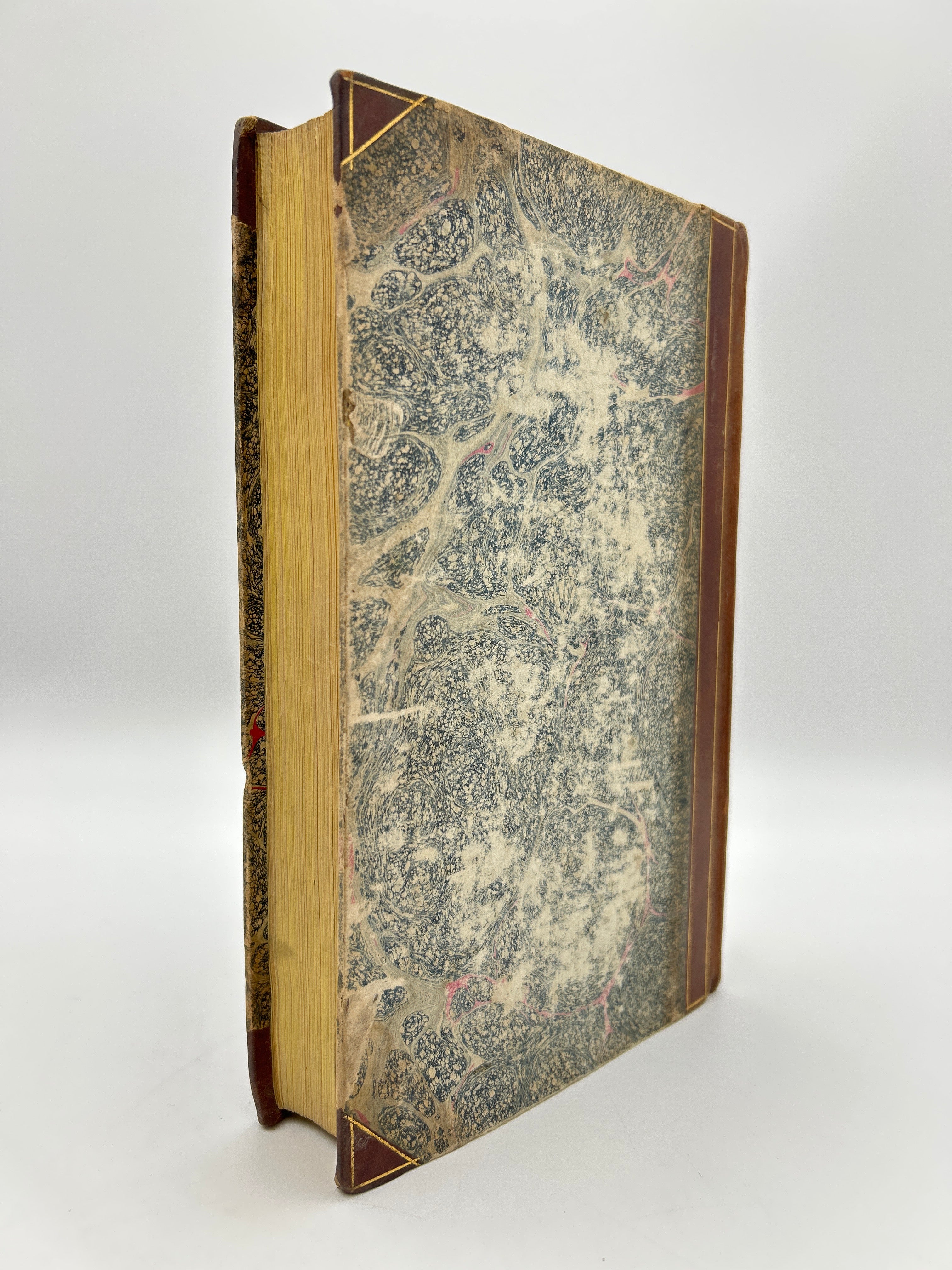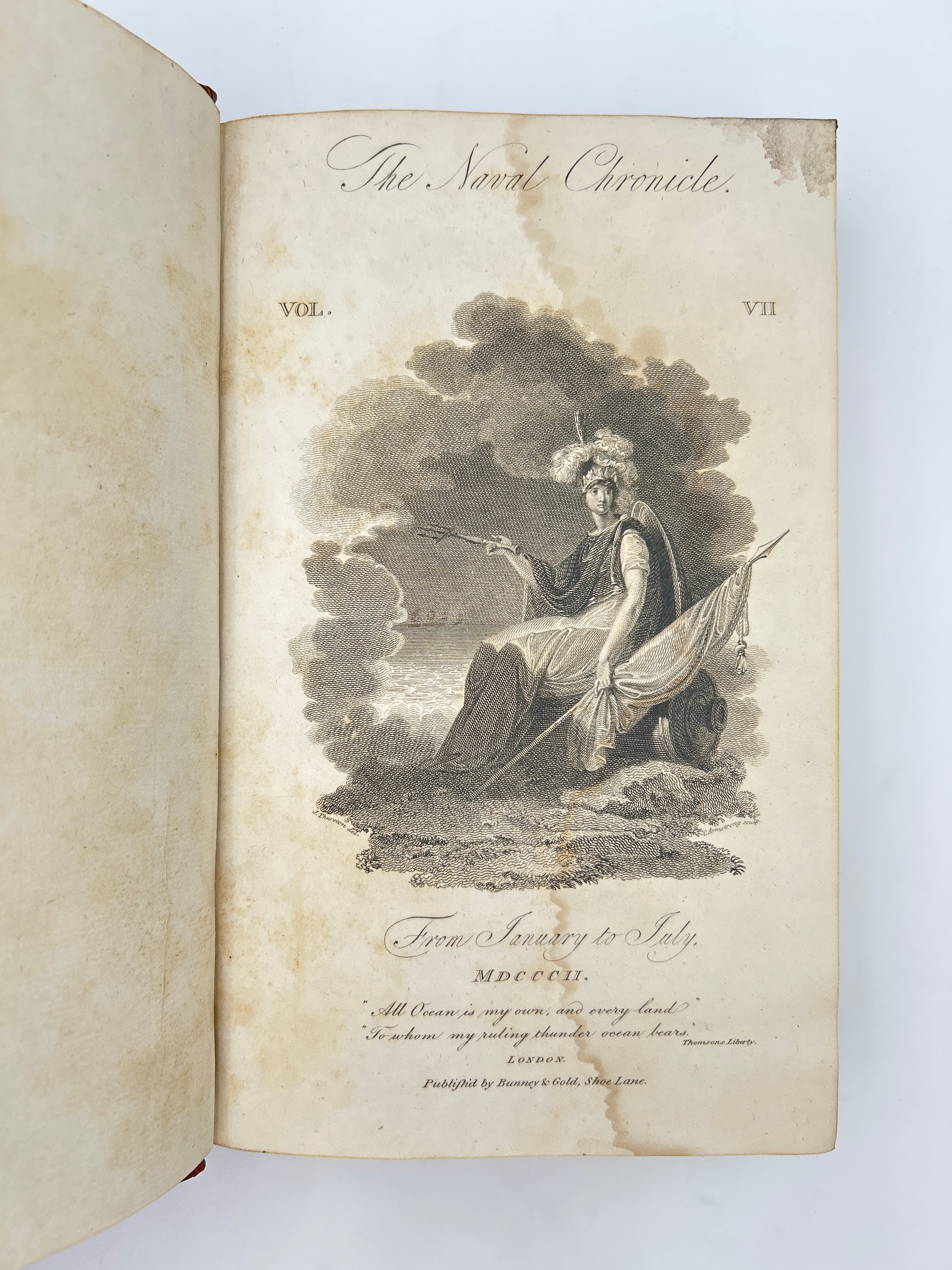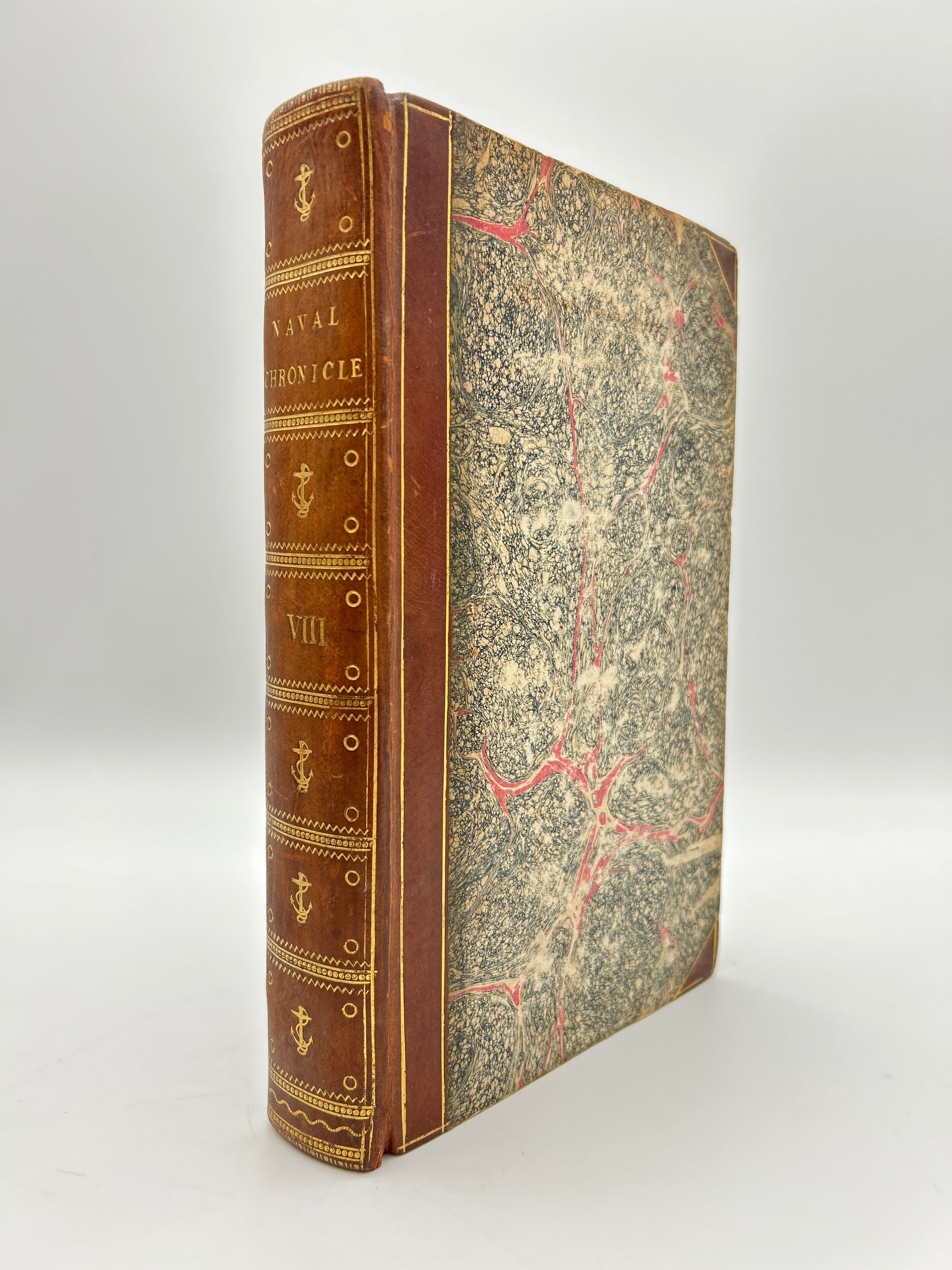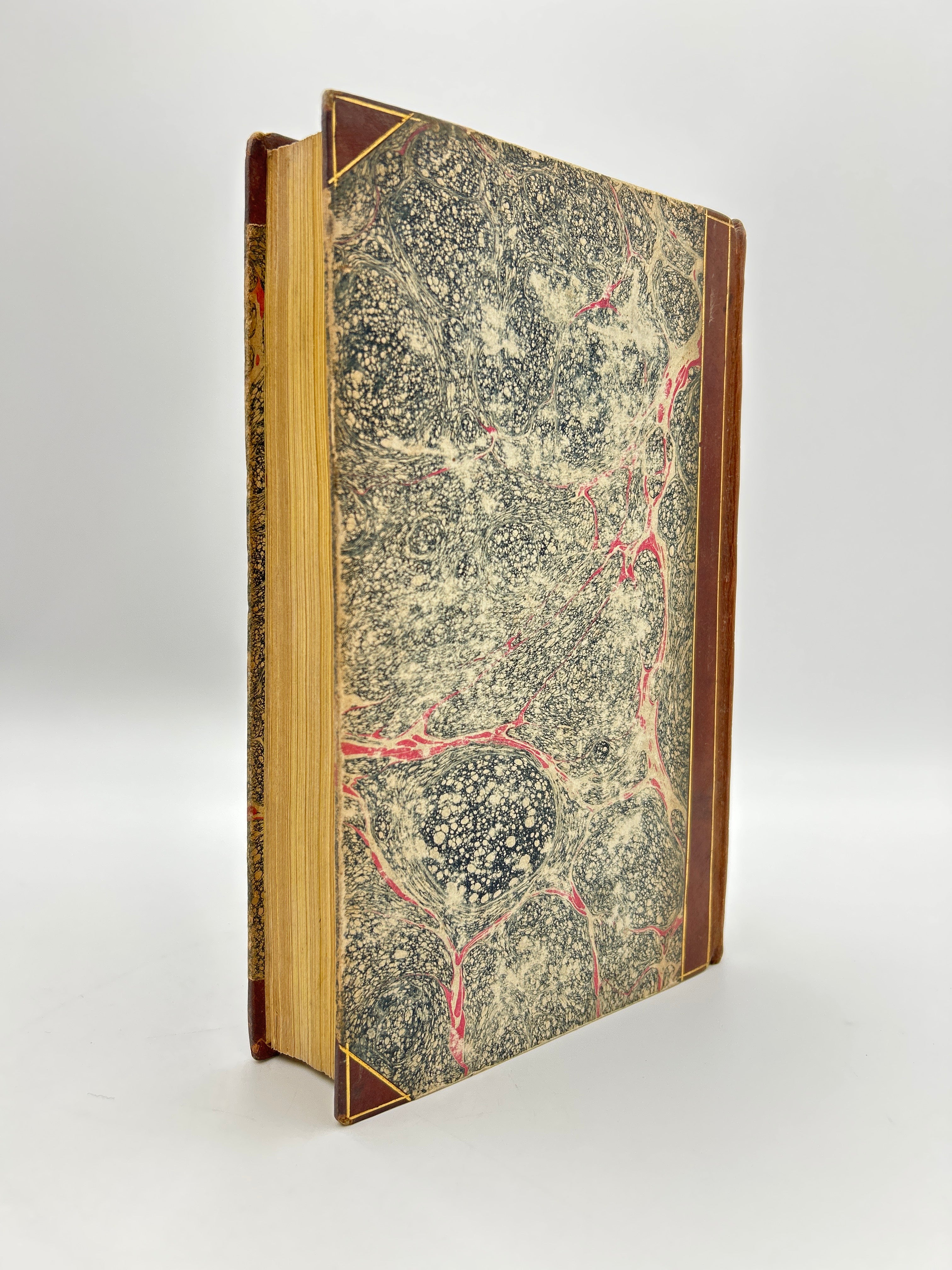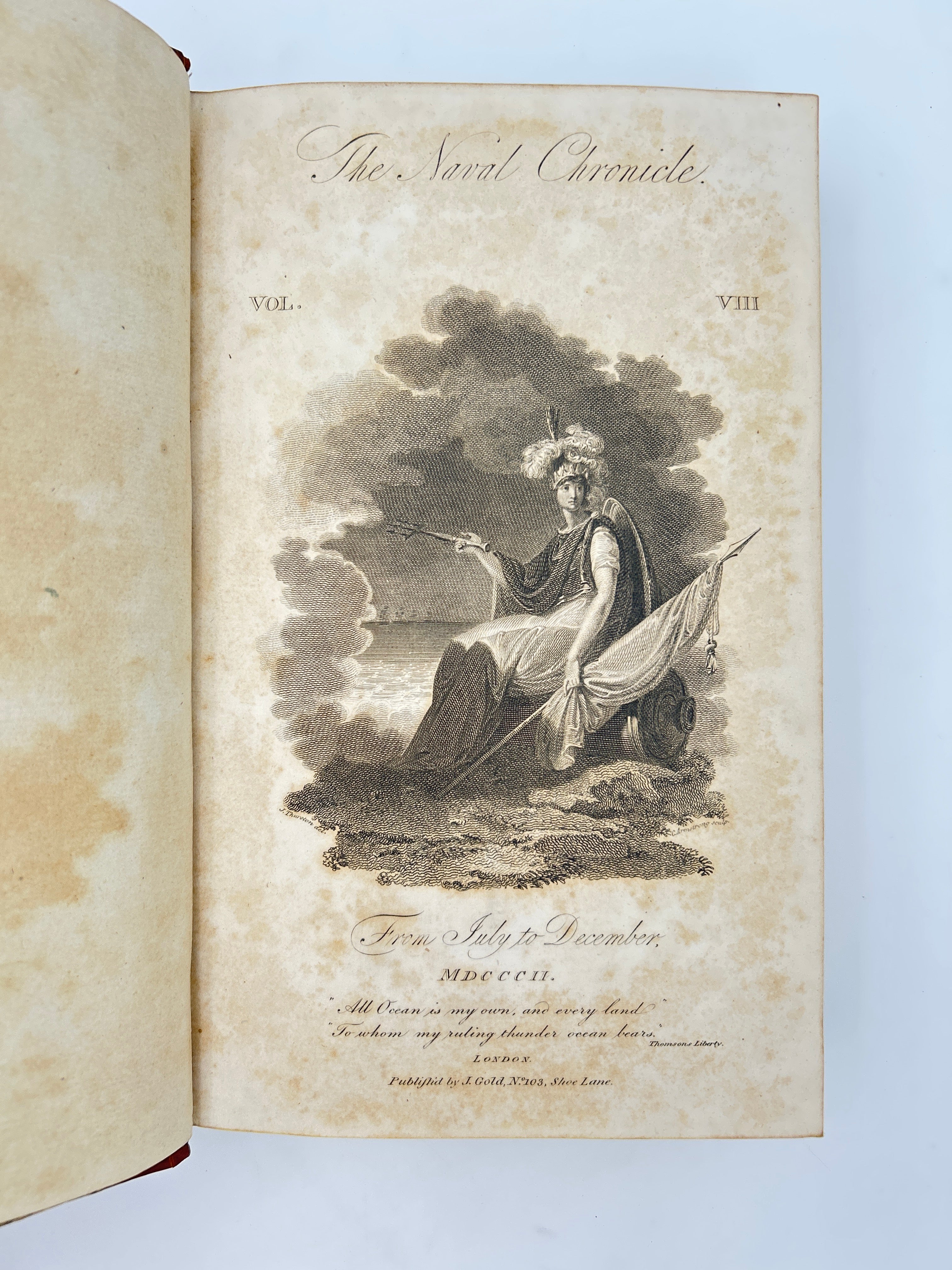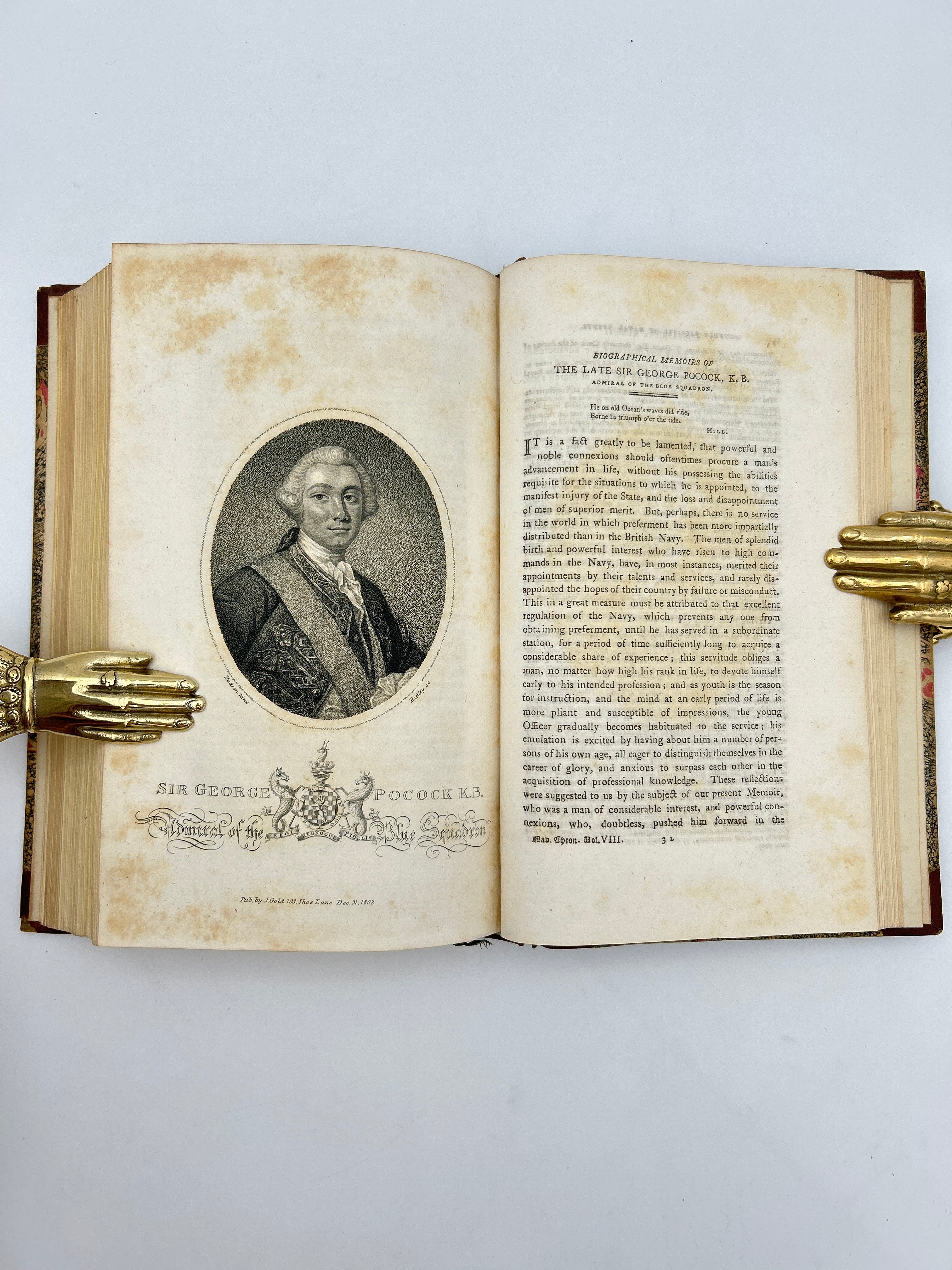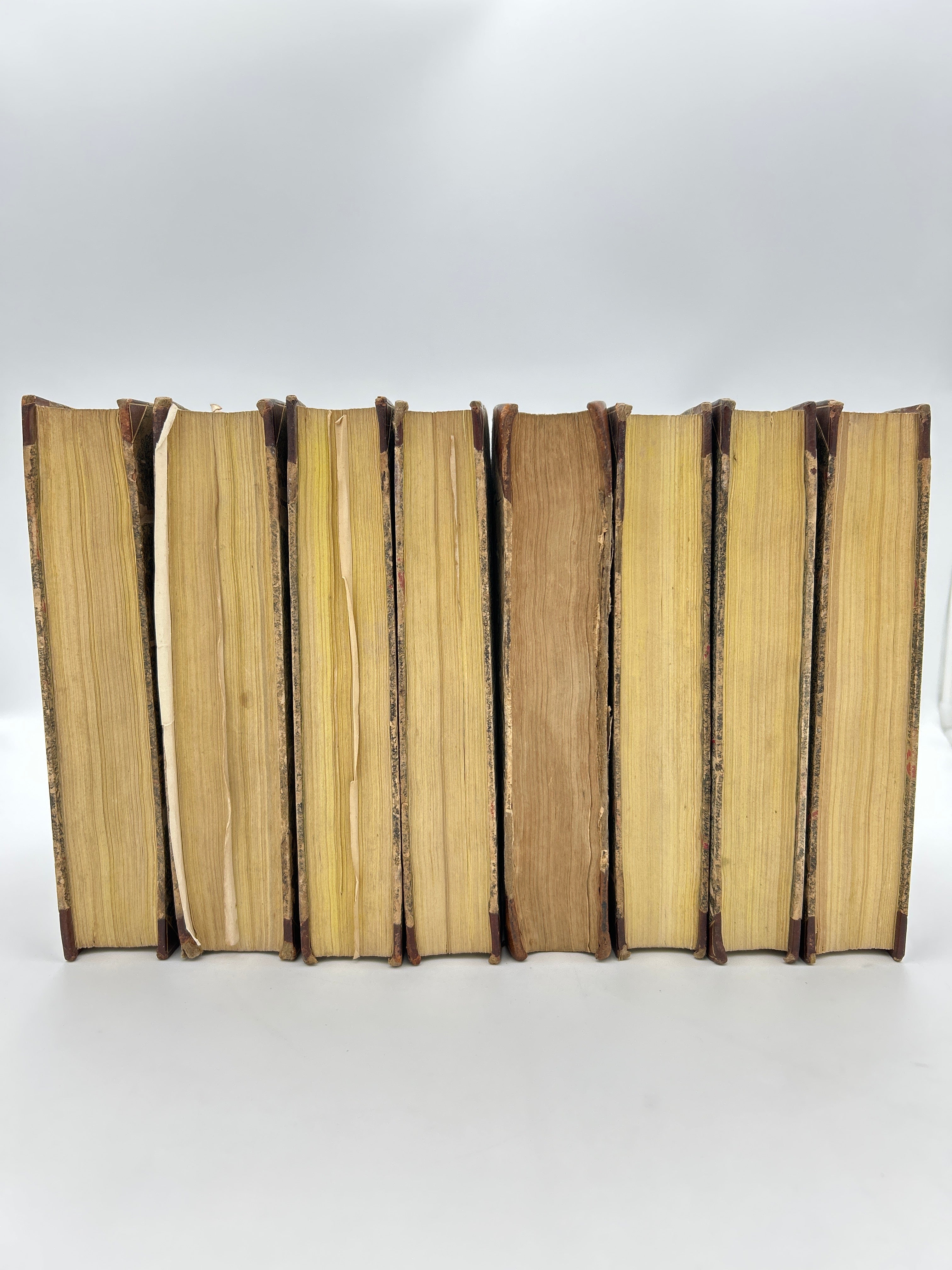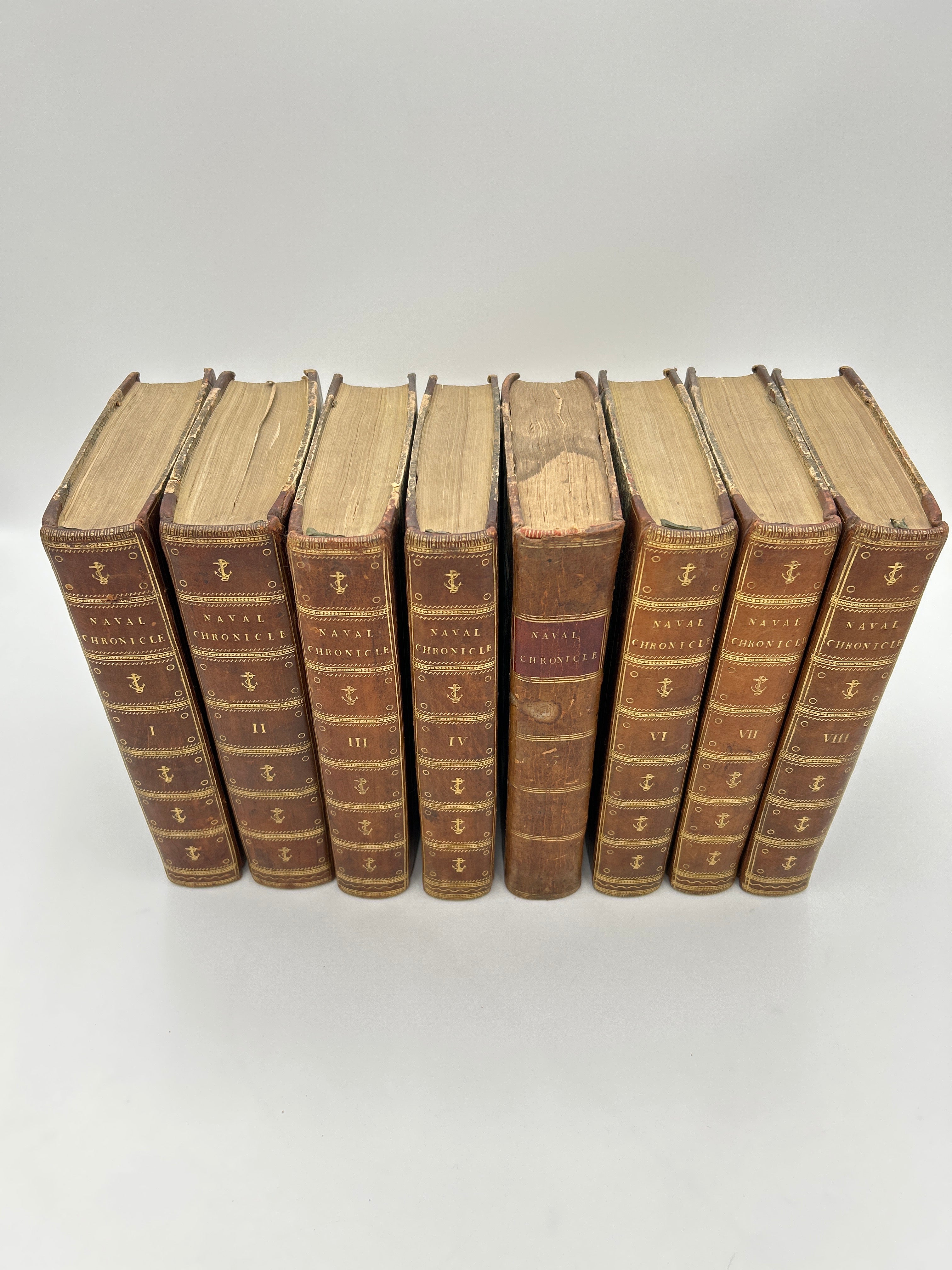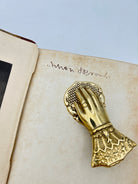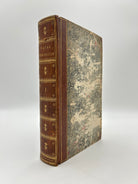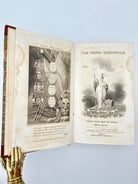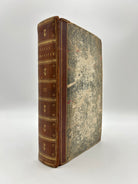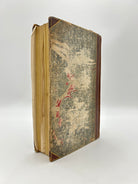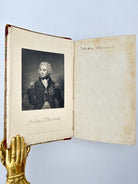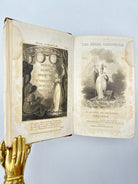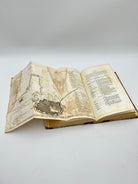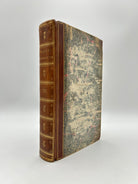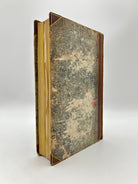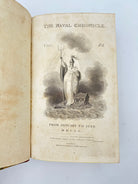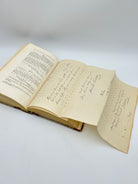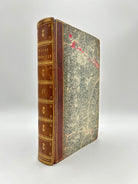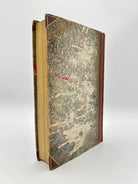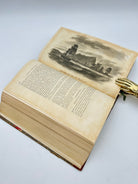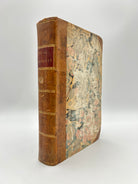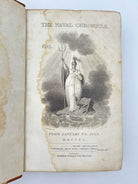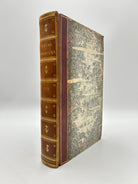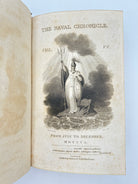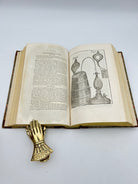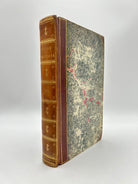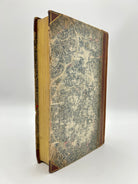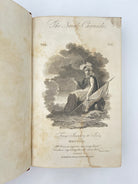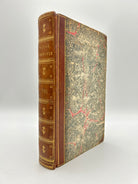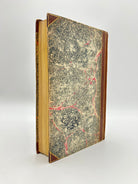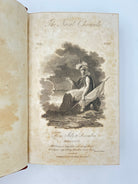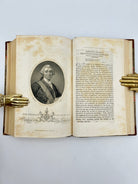The Naval Chronicle
Couldn't load pickup availability
5HR J.S. Clarke and John McArthur. London: Bunney and Gold, 1799-1802. In Eight Volumes. Belonged to Horatio Nelson.
Notes
The Naval Chronicle, founded and edited by James Stanier Clarke and John McArthur, was a highly influential maritime periodical published in London between 1799 and 1818, spanning 40 volumes of which we have 7 in this collection. It served as the principal source of naval news and history during a time when Britain was engaged in almost continuous naval conflict, particularly during the French Revolutionary and Napoleonic Wars. The Chronicle offered detailed reports on naval battles, biographies of prominent officers, ship movements, technological advancements, and government policies affecting the Royal Navy. There is a report of the Battle of the Nile is in volume II, and a long biography of Nelson himself in volume III. It was widely read by naval officers, politicians, and the educated public, becoming a crucial record of Britain’s naval supremacy in the early 19th century.
In addition to reporting on current events, the Naval Chronicle included first-hand accounts, official dispatches, correspondence, and biographical sketches of naval heroes—including figures like Admiral Nelson—helping to shape the heroic public image of the Royal Navy. Clarke and McArthur, both with close ties to the Admiralty and naval circles, used their access to provide authoritative and sometimes propagandistic narratives that celebrated British naval power. The Chronicle also featured essays on seamanship, navigation, and maritime culture, offering insights into life aboard ships. Today, it remains a valuable primary source for historians studying the Royal Navy and maritime history during Britain’s age of naval dominance.
This set belonged to Admiral Horatio Nelson (1758–1805) who was one of Britain's greatest naval commanders, known for his daring tactics, inspirational leadership, and key victories during the Napoleonic Wars. Born in Norfolk, England, Nelson joined the Royal Navy at a young age and quickly rose through the ranks due to his talent, bravery, and strategic insight. He lost sight in one eye during a mission in Corsica and later lost most of his right arm in battle, but continued to serve with distinction. Nelson became a national hero after his victories at battles such as the Nile (1798) and Copenhagen (1801), where he demonstrated bold, unconventional tactics and a willingness to defy orders when he believed it would lead to success.
His most famous and final battle was the Battle of Trafalgar, fought on October 21, 1805, off the southwest coast of Spain. Facing a combined French and Spanish fleet, Nelson led the British Royal Navy into battle with an unorthodox tactic: instead of the traditional parallel engagement, he split his fleet into two columns and cut through the enemy line, creating chaos and preventing coordinated defense. The British won a decisive victory, destroying or capturing 22 enemy ships without losing any of their own. However, Nelson was fatally shot by a French sniper during the battle and died aboard his flagship, HMS Victory. His death elevated him to almost mythic status in Britain, and he was given a state funeral at St. Paul’s Cathedral. Trafalgar not only ensured British naval supremacy but also cemented Nelson’s legacy as a symbol of courage, sacrifice, and patriotism.
Description
Eight volumes. 8vo in 4s. 232x140mm. Volume I, January to June 1799 has 13 plates including one folding map and two diagrams. Volume II, July to December 1799 has 12 plates and six charts and diagrams. Loosely inserted is an engraved portrait of Nelson with his signature on the endpaper. Volume III, January to July 1800 has 13 plates, plans, and diagrams. Volume IV July to January 1801 has 13 plates and maps. Volume V. January to July 1801 has 8 of 15 plates. Volume VI. July to December 1801 has 14 plates and diagrams. Volume VII January to July 1802 has 12 plates and maps including a chart of Newfoundland and a View of Wampooh in China. Volume VIII. July to December 1802. pp. viii, 520, [8]. 12 plates. Bound in half calf, marbled paper covered boards, flat spines decorated in gilt with anchor motifs and lettered in gilt. Volume V is bound with different marbled paper and spine and is from a different set but the other seven are uniformly bound. Fine condition overall.
